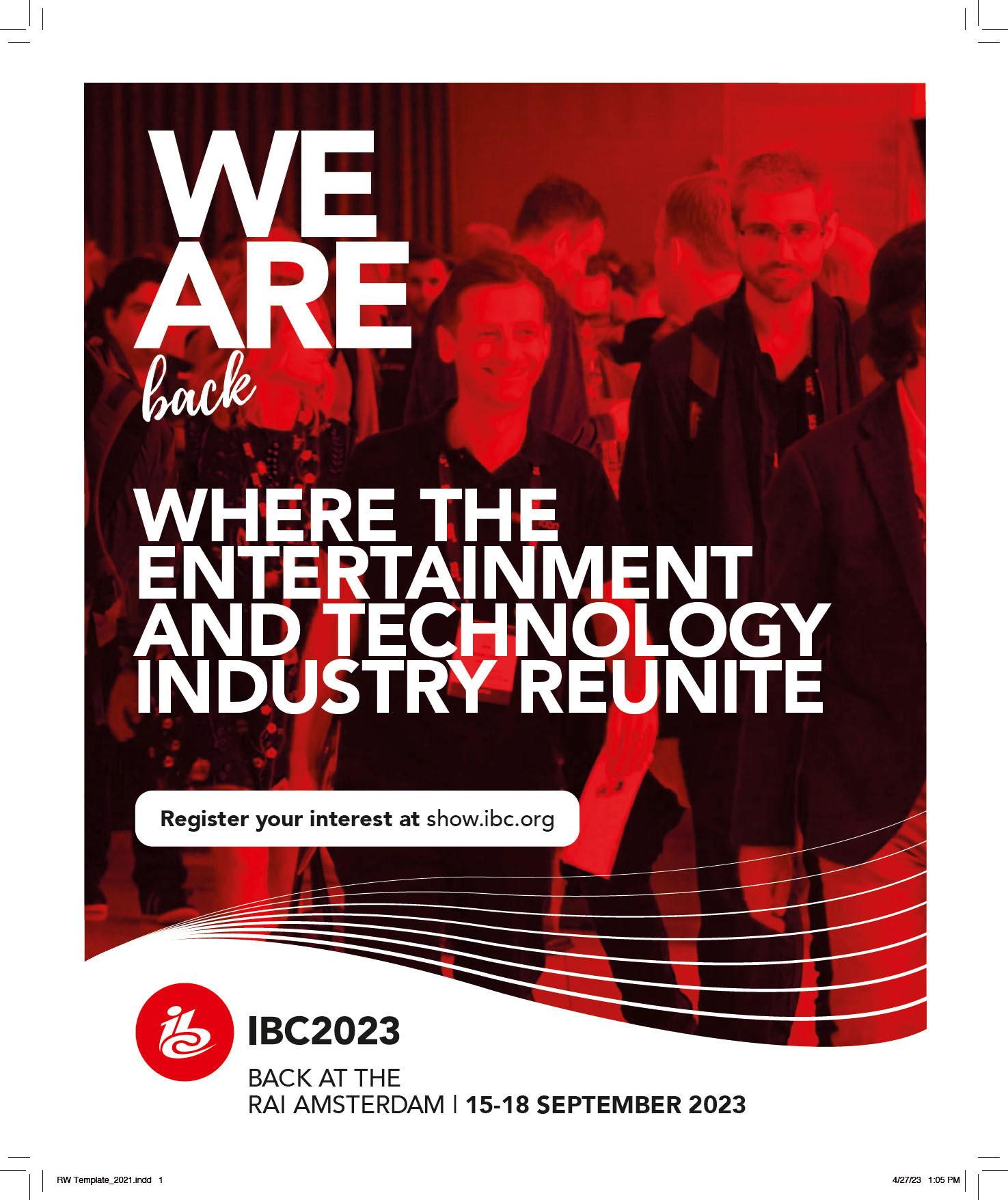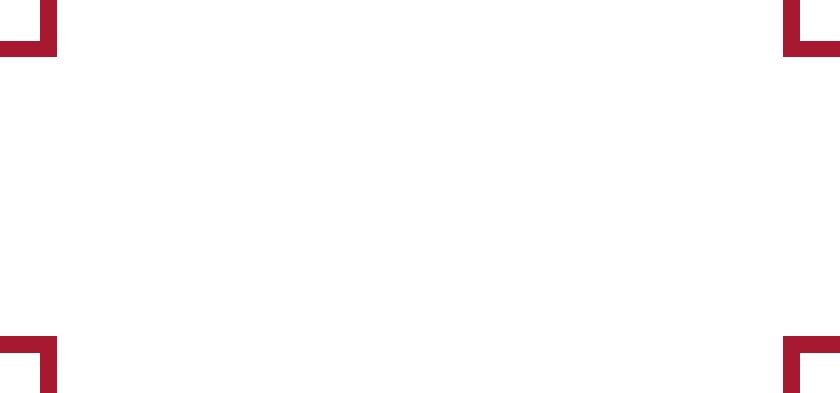

Make Your Streams Stand Out

Stream up to eight programs at once, each with four outputs for a total of 32 streams. Full suite of stream-specific audio processing tools. Optimize performance of audio content.
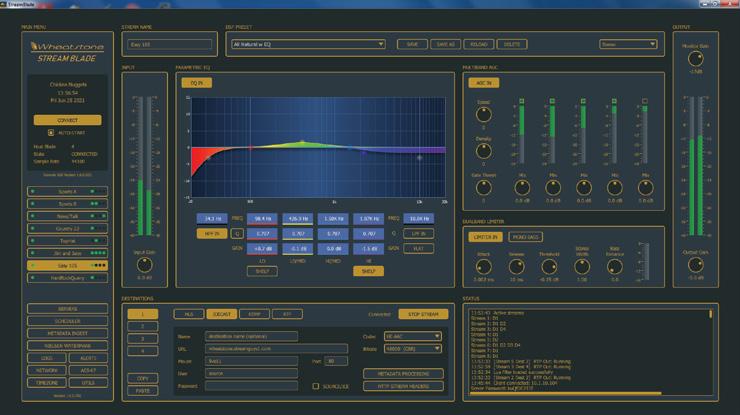
AAC, MP3 and Opus encoders. Reaching a broad range of end user devices and players.

Metadata agnostic. Lua transformation filters adapt metadata input from any automation system into any required output format.
Cloud-ready for the future, yet compatible with standard CDN and streaming platforms now. Supports HLS, Icecast, RTMP, and RTP streams.
All-inclusive Linux and AoIP appliance. No Windows® drivers, updates or PC needed. Add Streamblade to any audio network via WheatNet-IP, analog, AES3, or AES67 inputs or add Wheatstream to any existing WheatNet-IP or AES67 compatible networks.

wheatstone.com/stream-rw21a


Radio & the blind
Snapshots from Vegas
The NAB Show drew 65,000 people. Here are photos of a bunch of them.
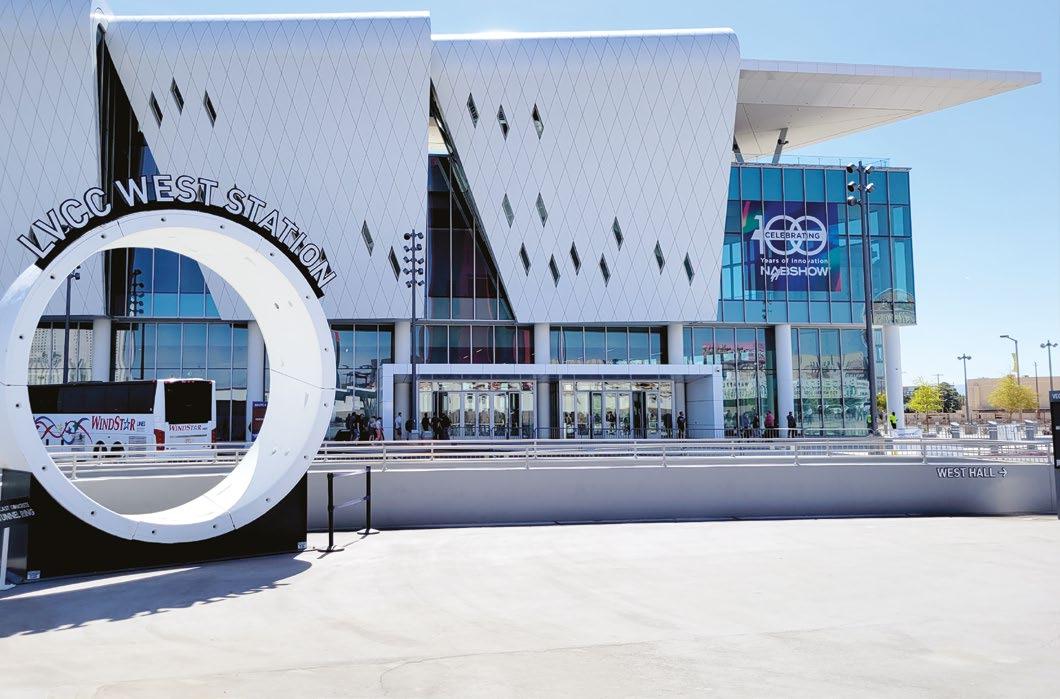
NABA offers hybrid help
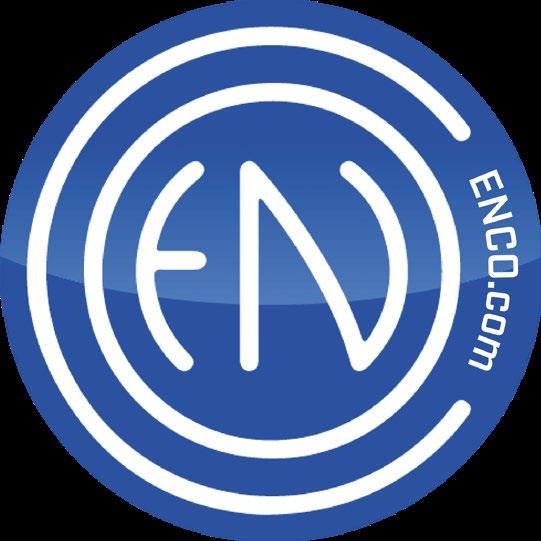

A new document provides insights about hybrid radio and metadata best practices.
All the pretty lights
Workbench touches on programmable switches, transformers, heat shrink and more.

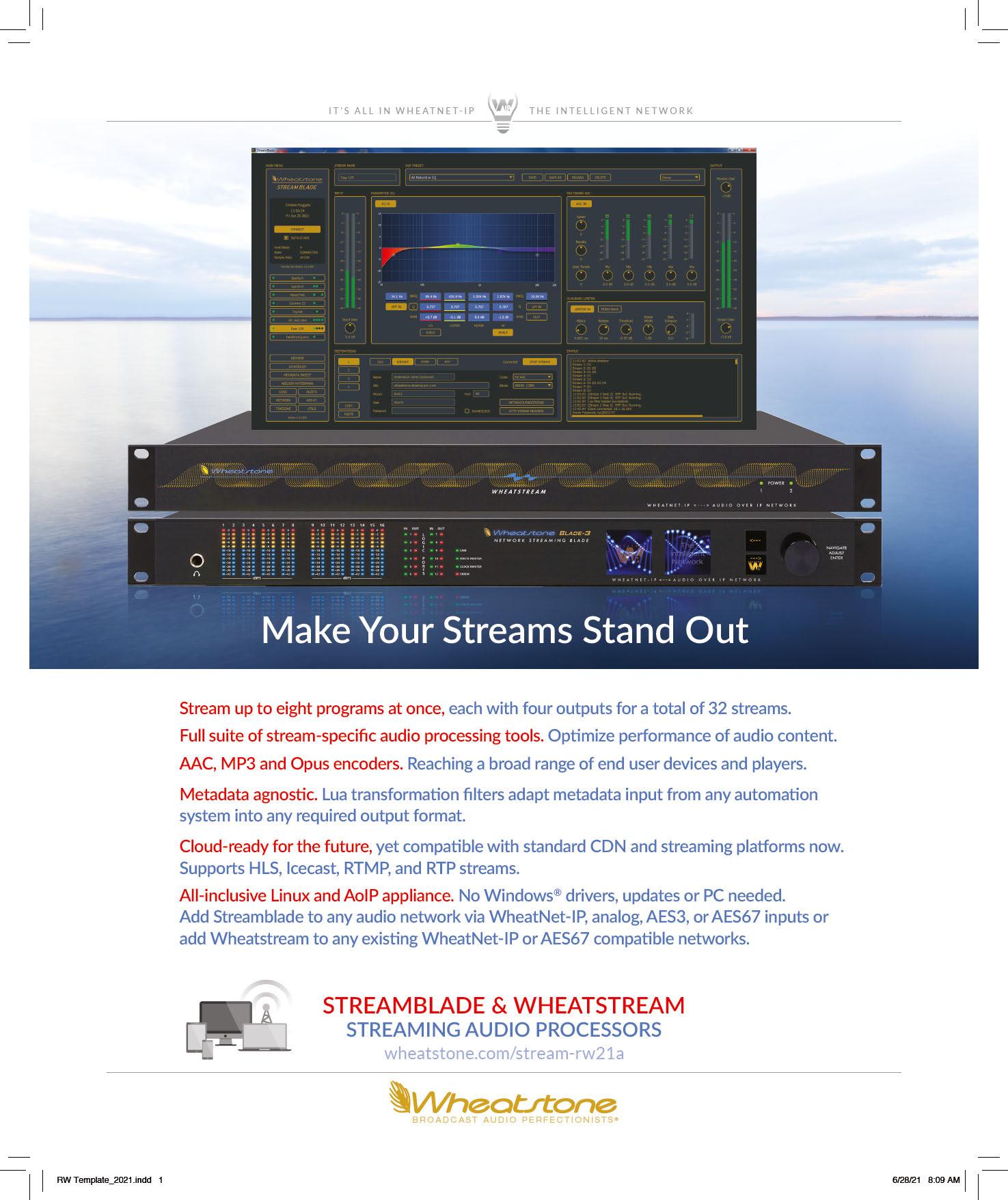
Future’s 2022 B2B Publication of the Year
Vol.
47
FOLLOW US
www.twitter.com/radioworld_news
www.facebook.com/RadioWorldMagazine
CONTENT
Managing Director, Content & Editor in Chief Paul J. McLane, paul.mclane@futurenet.com, 845-414-6105

Content Producer & SmartBrief Editor Elle Kehres, elle.kehres@futurenet.com
Technical Advisors Thomas R. McGinley, Doug Irwin
Technical Editor, RW Engineering Extra W.C. “Cris” Alexander
Contributors: Susan Ashworth, David Bialik, John Bisset, Edwin Bukont, James Careless, Ken Deutsch, Mark Durenberger, Charles Fitch, Donna Halper, Alan Jurison, Paul Kaminski, John Kean, Larry Langford, Mark Lapidus, Michael LeClair, Frank McCoy, Jim Peck, Mark Persons, Stephen M. Poole, James O’Neal, T. Carter Ross, John Schneider, Dan Slentz, Dennis Sloatman, Randy Stine, Tom Vernon, Jennifer Waits, Steve Walker, Chris Wygal
Production Manager Nicole Schilling
Group Art Director Nicole Cobban
Senior Design Director Lisa McIntosh
Senior Art Editor Will Shum
ADVERTISING SALES
Senior Business Director & Publisher, Radio World John Casey, john.casey@futurenet.com, 845-678-3839
Publisher, Radio World International
Raffaella Calabrese, raffaella.calabrese@futurenet.com, +39-320-891-1938
SUBSCRIBER CUSTOMER SERVICE
To subscribe, change your address, or check on your current account status, go to www.radioworld.com and click on Subscribe, email futureplc@computerfulfillment.com, call 888-266-5828, or write P.O. Box 1051, Lowell, MA 01853. Licensing/Reprints/Permissions
Radio World is available for licensing. Contact the Licensing team to discuss partnership opportunities. Head of Print Licensing Rachel Shaw licensing@futurenet.com
MANAGEMENT
SVP Wealth, B2B and Events Sarah Rees
Managing Director, B2B Tech & Entertainment Brands Carmel King
Managing Vice President of Sales, B2B Tech Adam Goldstein
Head of Production US & UK Mark Constance
Head of Design Rodney Dive
FUTURE US, INC.
Future US LLC, 130 West 42nd Street, 7th Floor, New York, NY 10036
All contents ©Future US, Inc. or published under licence. All rights reserved. No part of this magazine may be used, stored, transmitted or reproduced in any way without the prior written permission of the publisher. Future Publishing Limited (company number 02008885) is registered in England and Wales. Registered office: Quay House, The Ambury, Bath BA1 1UA. All information contained in this publication is for information only and is, as far as we are aware, correct at the time of going to press. Future cannot accept any responsibility for errors or inaccuracies in such information. You are advised to contact manufacturers and retailers directly with regard to the price of products/services referred to in this publication. Apps and websites mentioned in this publication are not under our control. We are not responsible for their contents or any other changes or updates to them. This magazine is fully independent and not affiliated in any way with the companies mentioned herein.
If you submit material to us, you warrant that you own the material and/or have the necessary rights/ permissions to supply the material and you automatically grant Future and its licensees a licence to publish your submission in whole or in part in any/all issues and/or editions of publications, in any format published worldwide and on associated websites, social media channels and associated products. Any material you submit is sent at your own risk and, although every care is taken, neither Future nor its employees, agents, subcontractors or licensees shall be liable for loss or damage. We assume all unsolicited material is for publication unless otherwise stated, and reserve the right to edit, amend, adapt all submissions.
Radio World (ISSN: 0274-8541) is published bi-weekly with additional issues in February, April, June, August, October and December by Future US, Inc., 130 West 42nd Street, 7th Floor, New York, NY 10036. Phone: (978) 667-0352. Periodicals postage rates are paid at New York, NY and additional mailing offices.
NABA offers hybrid help
Provides insights on hybrid radio and metadata
T
Paul McLane Editor in Chief
The authors issued a list of recommendations. They say FM stations should at least adopt static RDS tools, and ideally provide both static and dynamic metadata using RDS. They encourage AM and FM stations to strongly consider adopting HD Radio’s hybrid IBOC mode as well as the best practices for metadata published earlier by the NAB.
They also asked industry associations and network groups to reach out to automakers to “encourage the continued primary placement of broadcast radio within head units.” And they particularly encouraged AM broadcasters to express concern to specific automakers that don’t include AM receivers in electric vehicles, asking them to reconsider.
The 30-page report was released in conjunction with a session at the NAB Show in Las Vegas. Its goal is to help improve broadcasters’ awareness of hybrid radio technology and understanding of the importance of good metadata in this era of large, colorful dashboard displays.
“Proper use by broadcasters of hybrid radio and metadata will help broadcasters maintain their dominant position in the automotive audio landscape and maintain listeners’ interest,” it states.
The report explains the basics of hybrid radio, which combines internet protocol connectivity and OTA broadcast radio, and summarizes its promised benefits, including brand reinforcement and enhanced and on-demand content. It gives a layperson’s explanation of “service following,” in which broadcast reception can switch to an internet version of the same content when a vehicle leaves a station’s coverage area, and discusses the technical issues involved.
The report provides descriptions of various players in the hybrid radio landscape including RadioDNS, DTS AutoStage, Radioplayer Worldwide, Radioline and Quu Inc. It also has sections about metadata delivery, RDS and HD
he North American Broadcasters Association has released its new guidance document about hybrid radio and metadata. Radio World previewed this in our March 29 issue.THIS ISSUE NEWS
3 From the Editor
5-6 NAB Show in photos
FEATURES
8 As goes your FM processing, so should your HD1
10 Workbench: Oooh look at all the pretty lights!
14 18 NAB Show in photos
20 Radio and the blind: an evolving relationship
BUYER’S GUIDE
24 ADJA in Senegal deploys winCam
27 NH Radio automates with Visual Radio Assist
LAST WORDS
29 30 NAB Show in photos
3Radio metadata; and it discusses licensing and data usage considerations of hybrid radio.

It concludes with a discussion of “creating an environment for success” and explores potential reasons metadata is not deployed properly.
The authors said that radio CEOs have publicly stated support for a competitive implementation of radio in vehicles. “However, scanning across the radio dial in numerous markets so far, there has not been a coordinated effort by radio stations to populate the car radio displays, and thus, it appears that the advantage of these features has not been disseminated throughout the radio organizations.”
Why? Perhaps station management hasn’t conveyed the urgency to their staffs, or they don’t realize that implementation costs for basic metadata services are minimal. Brand managers and sales staff may not be aware of the visualization capabilities of radio. Employees might not be driving vehicles with this technology yet and are not aware of the benefits.
Among the ideas offered are to have the programming, production and engineering departments set up one of the market’s stations with a full-featured connected car demonstration, and use a smartphone to capture a video of the results for a short presentation to staff. Stations also could purchase and install radios in their lobby or studios so the entire staff can see a visual radio experience.
Find the document at https://nabanet.com/
Right
The relationship of entities involved in provisioning of hybrid radio services over the internet. Source: RadioDNS.
For attendees who couldn’t make the show last year, the LVCC Loop and the West Hall were novelties. And for all who wanted to get to and from the West Hall quickly, the Loop was a popular choice.
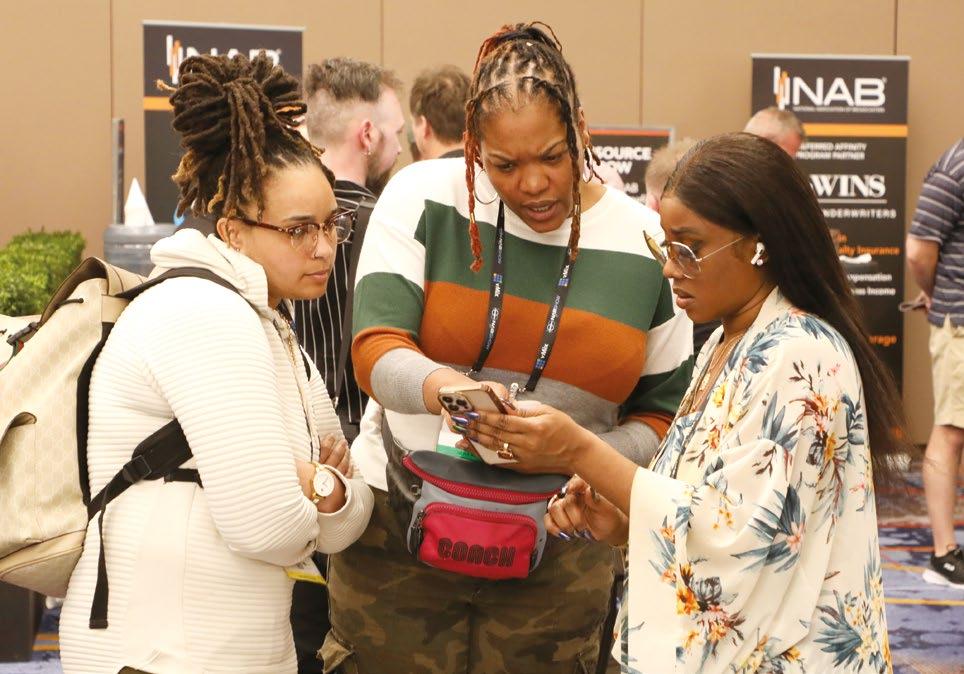
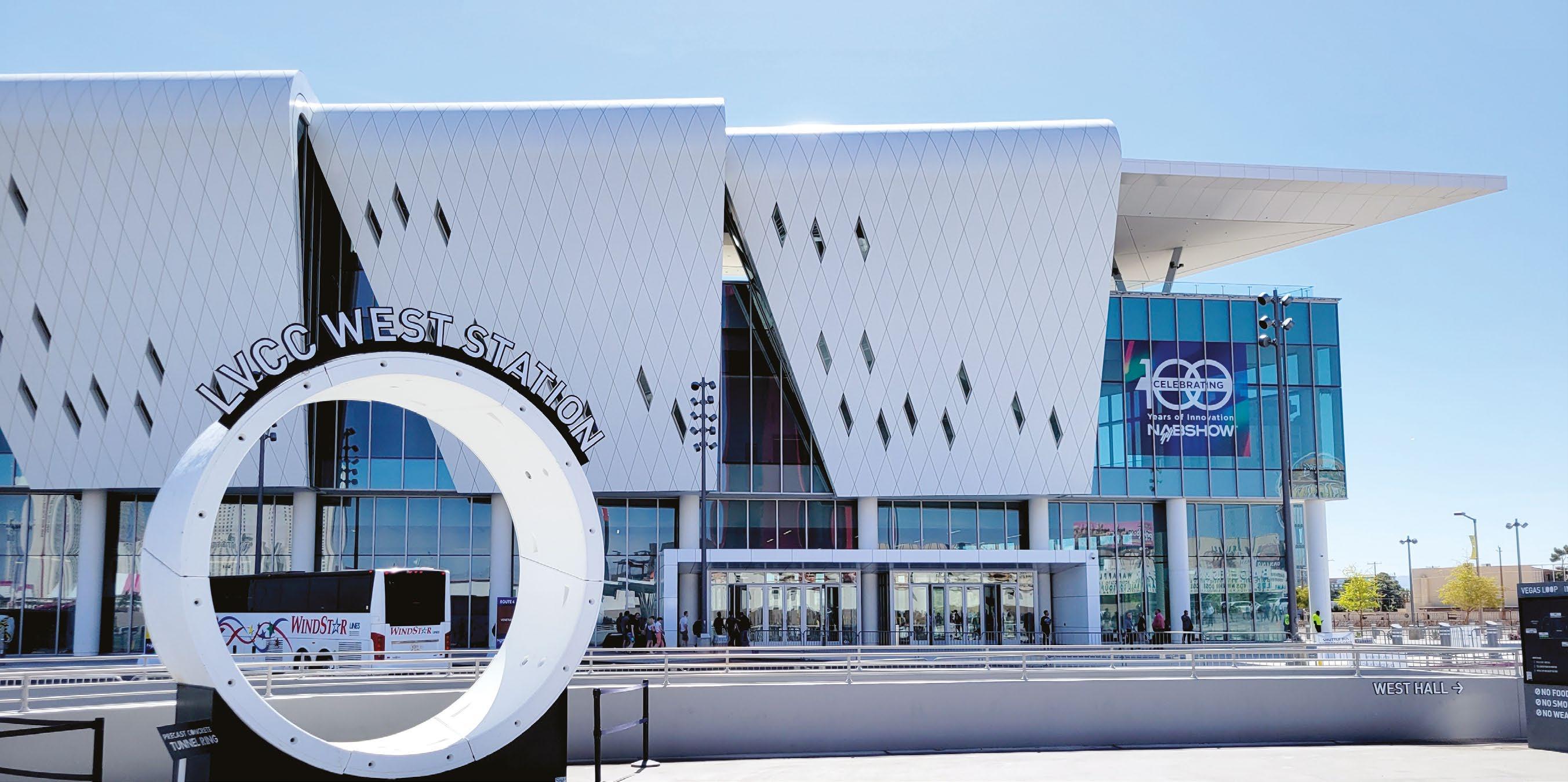
NAB Show in photos
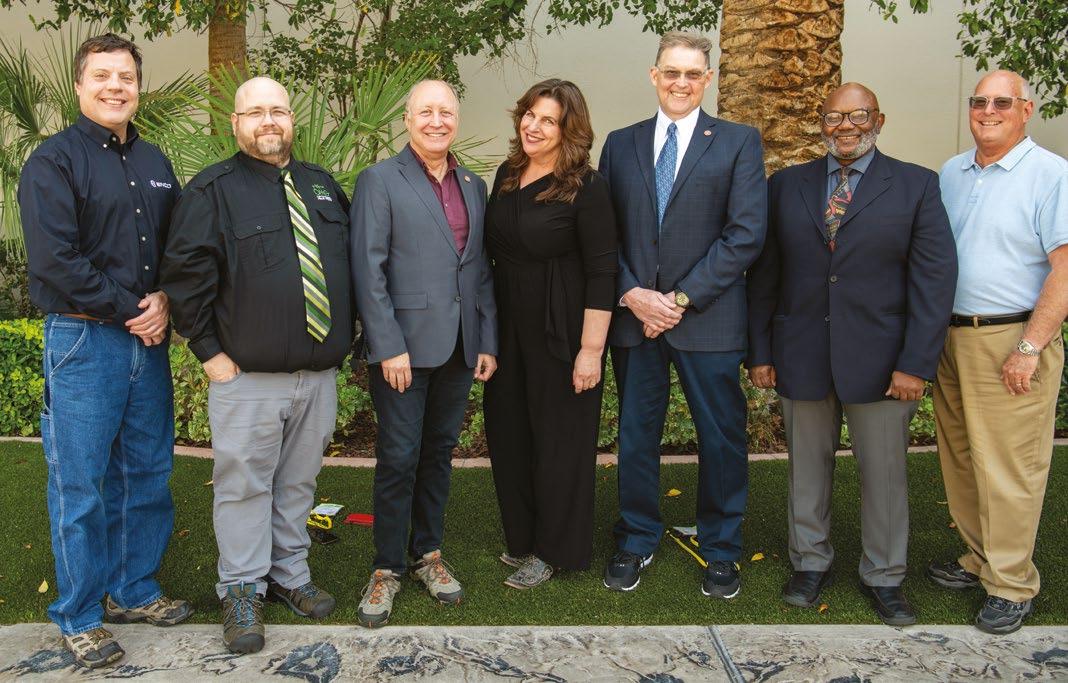


NAB President/CEO Curtis LeGeyt said broadcasters must emphasize the relevance of radio. “It’s easy to say in a time of disaster, ‘Well listen, I got an alert on my phone.’ But what does that alert say? ‘Tune into your local media.’ And those AM stations serve as the backbone for the emergency alerting that goes through the broadcast system.” He was with Univision’s Gabriela Teissier.

Renard Jenkins of Warner Bros.
Discovery, president of SMPTE, keynoted the engineering conference.
“Take advantage of what you have in front of you. We went into this business to have fun. Don’t lose that fire. The work you do impacts so many people.” He’s with NAB’s Sam
Attendees make plans during the Radio Happy Hour on Monday.
The estimated attendance was 65,013, compared to 91,500 prior to the pandemic but up from last year’s final total of 53,457.
Matheny.Founded in 1923, NAB was originally the National Association of Radio Broadcasters. Its first convention was in New York in October of that year at the Commodore Hotel, with 16 stations and 23 attendees, in conjunction with the National Radio Show.
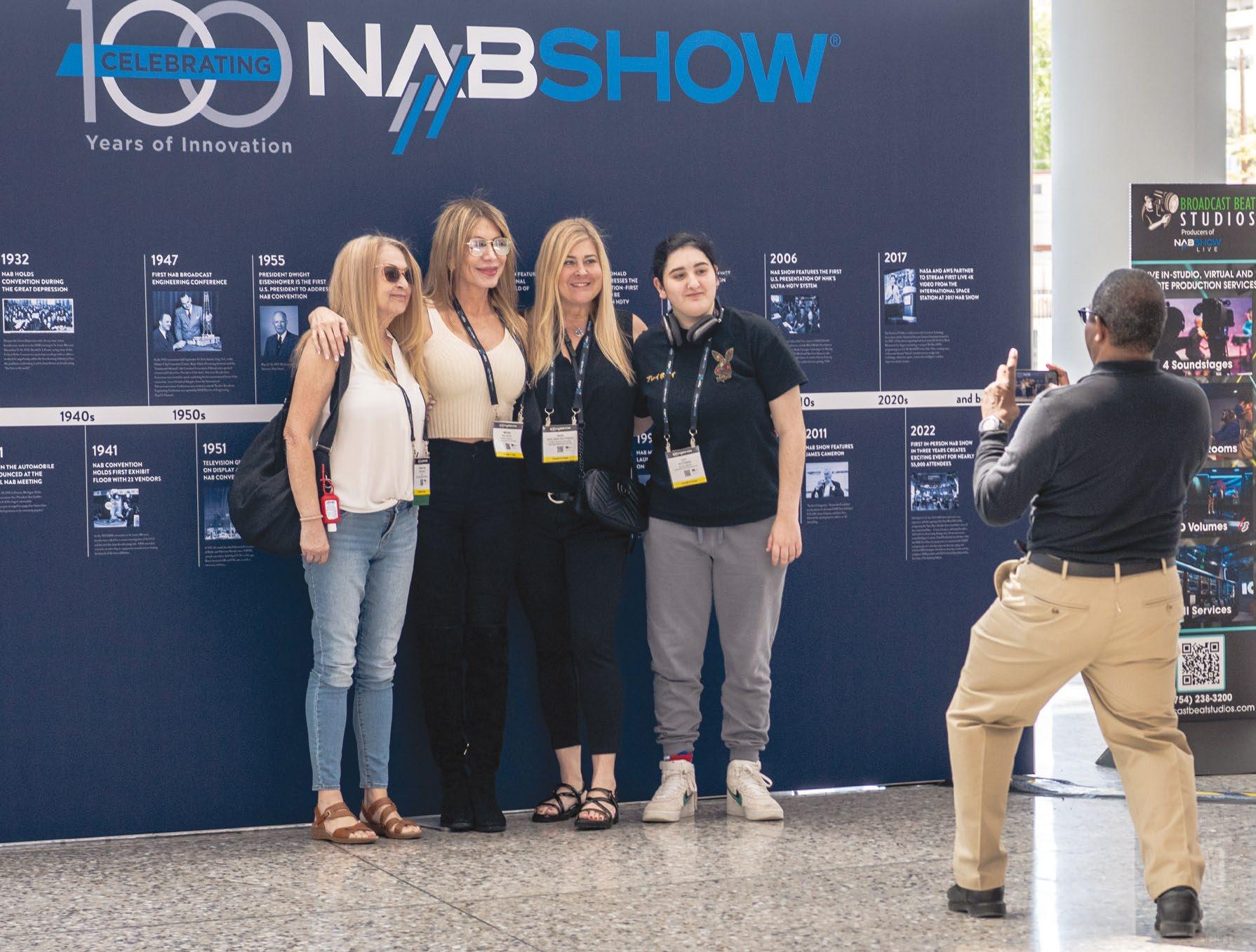
FCC Chairwoman Jessica Rosenworcel announced a public-private effort led by the NAB to boost the rollout of NextGen TV. On a less amiable note, the NAB days later asked a federal court to force the FCC to complete its 2018 quadrennial rules review; it accused the FCC of “a perpetual slow-roll.”
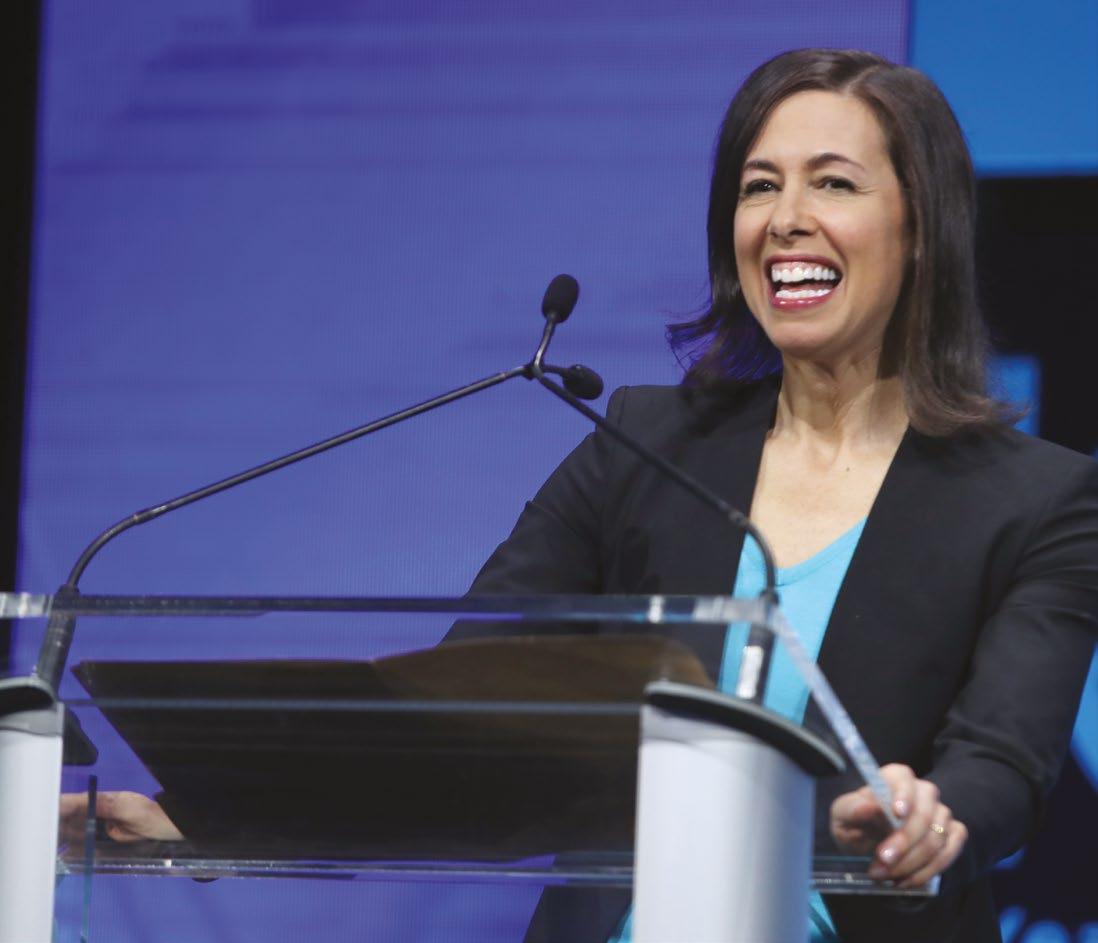
The Association of Public Radio Engineers presented NAB’s David Layer with its Meritorious Service Award. Layer is flanked by Scott Hanley, APRE’s new president, and Ralph Hogan, its founding president.
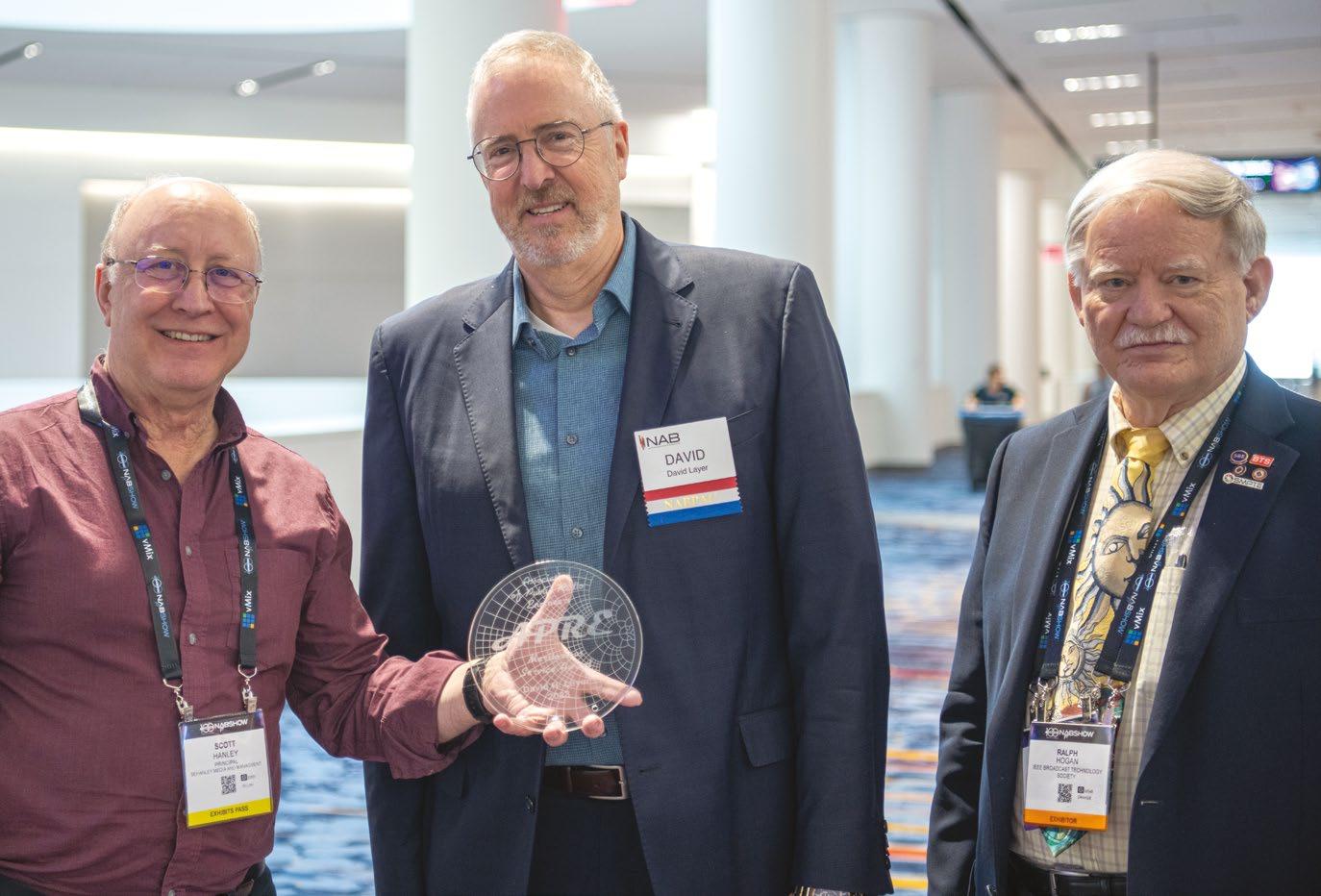
Applications for generative artificial intelligence were a big topic across the show. Naveen Narayanan of Quickplay discusssed uses in broadcasting and streaming, including creation of AI-generated images. Futuri Media’s RadioGPT was a buzzy item shown in a suite and discussed in sessions. Other exhibitors with AI offerings included Veritone and ENCO.

The Society of Broadcast Engineers expanded its spring Ennes Workshop to a two-day event held separately from the NAB Show technical agenda. Fred Baumgartner and Andrea Cummis welcomed a happy crowd.
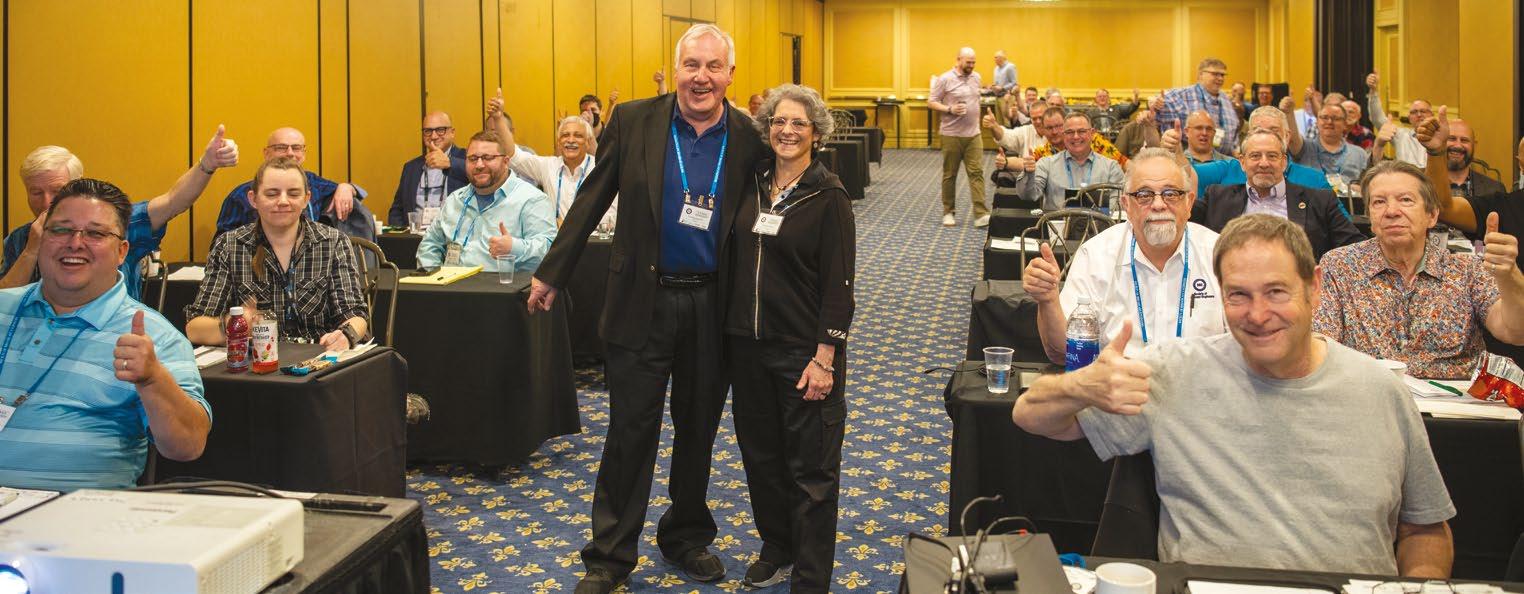
GatesAir highlighted new FM and DAB/DAB+ radio transmitters. Exhibitors also showing new radio transmitters included Nautel, Elenos/Broadcast Electronics and WorldCast Systems/Ecreso.

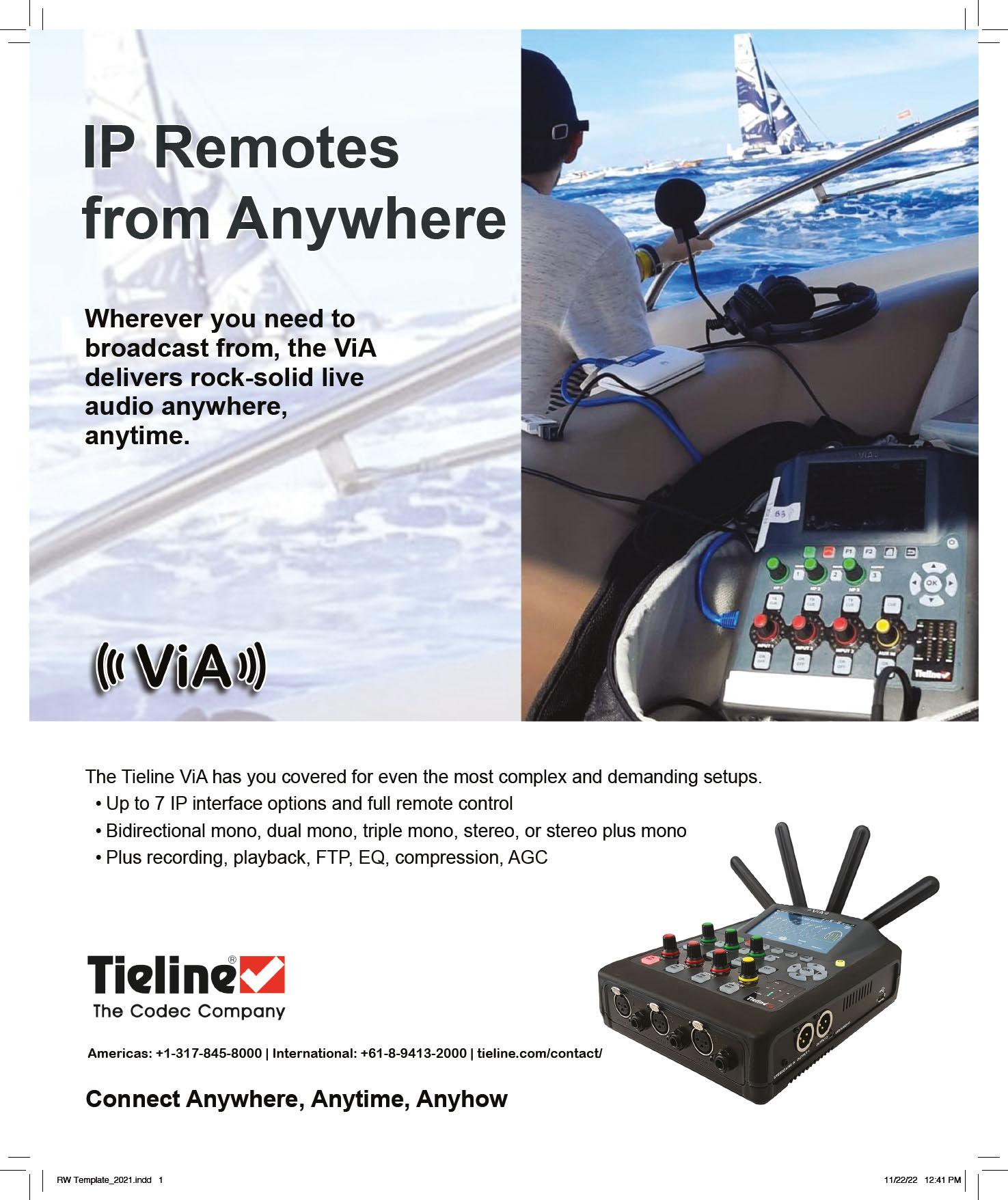
As goes your FM processing, so should your HD1
Jurison emphasizes the need to process those two identically
Alan Jurison is senior operations engineer for iHeartMedia. Much of his focus has been on advancing its transmission of digital HD Radio data services, RDS and other metadata services. This is an excerpt from the ebook “Trends in Audio Processing 2022,” available at http://radioworld.com/ebooks.

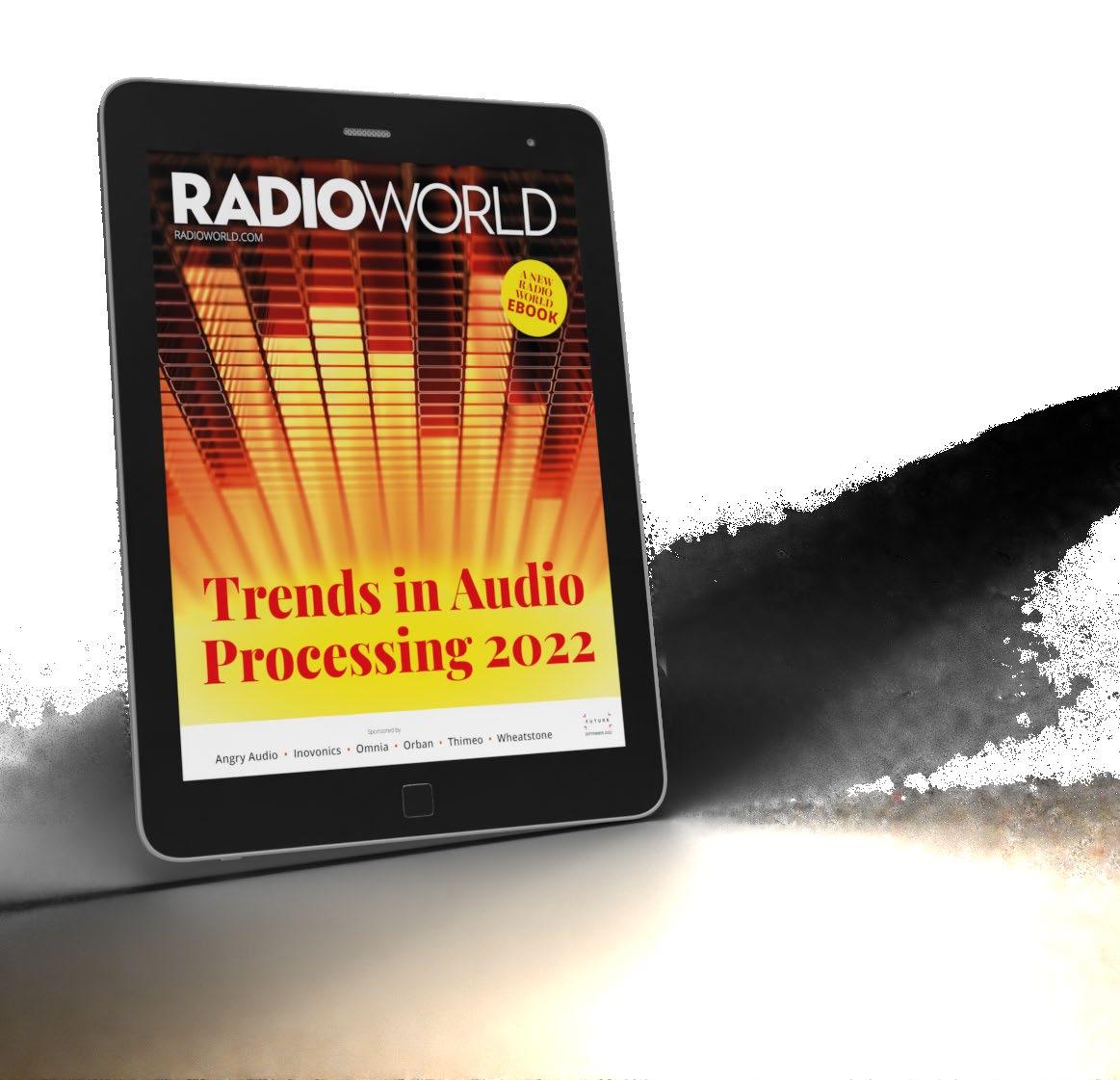
How would you describe your approach to radio processing?
Alan Jurison: There are a lot of opinions on signature sounds. In my position, I offer advice but allow some of our engineers with audio processing backgrounds to help shape those opinions for our use. A key philosophy to take away is to process your FM and HD1 signals identically. … As we’ve learned in the past few years, as goes FM processing, so should HD1. FM+HD1 processing should be done in the same appliance and processing core for the best blending transition. Separate audio processors for FM vs. HD1 and different sound profiles between the two are now strongly discouraged, and that advice has been acknowledged by the industry as a best practice; see Section 5.1 of NRSC-G203. For channels that are alldigital, or pure-play digital — HD2, HD3, HD4 or internet streams or other applications well ahead of a transmitter site
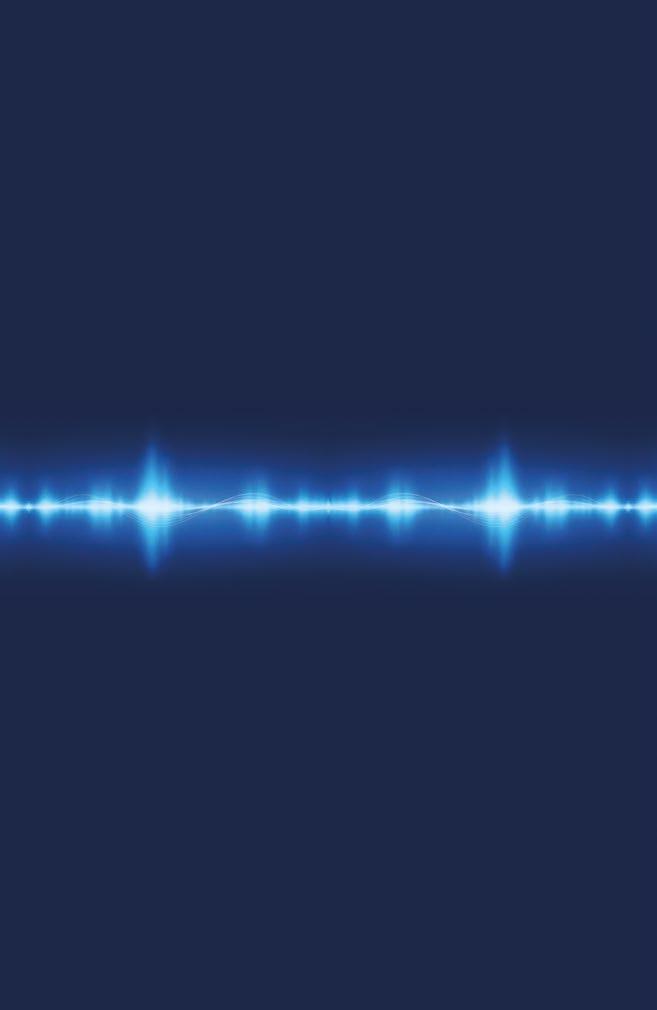
— I see the general trend into moving those into software or cloud-based processing services. The industry has already started shifting in this direction…
What features or capabilities would you like manufacturers to add to their offerings?
Jurison: Making the FM+HD1 audio processing identical, easy for the enduser in a single-box processor. There are scores of firmware updates, tech notes, settings changes and tweaks
needed in a lot of common modern signal-box processors to get the FM and HD1 to be processed identically. It’s hard for the engineers out in the field to know all this information. These should be the default settings with the latest firmware update and not left up to the user to find out how to update the product to fix some misconceptions in earlier processor design. Any new products leaving the factory need to be set this way, and careful review and analysis in a lab should be done for any future firmware updates or product redesigns to focus in this area. HD is no longer an afterthought.
What tools are available to mitigate issues involving synchronization of HD Radio and analog signals?
Jurison: Single-box, common processing for both FM+HD1. Do not employ multiple devices to process FM and HD1 signals separately. With overall automotive HD penetration in some markets exceeding 40%, this is becoming more important every day. In some markets we are arriving at the point where we have just as many listeners to the HD1 as we do the analog FM.
Using an automated alignment processor is important too. There are various ways to achieve this either in the properly equipped Gen4 Exporters, external alignment processors, audio processors with integrated time alignment features, or external monitors that direct an older Exporter or audio processor to change the delay.
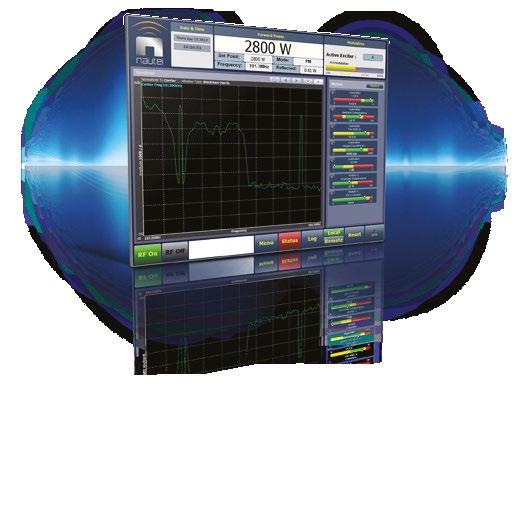
“In some markets we are arriving at the point where we have just as many listeners to the HD1 as we do the analog FM.
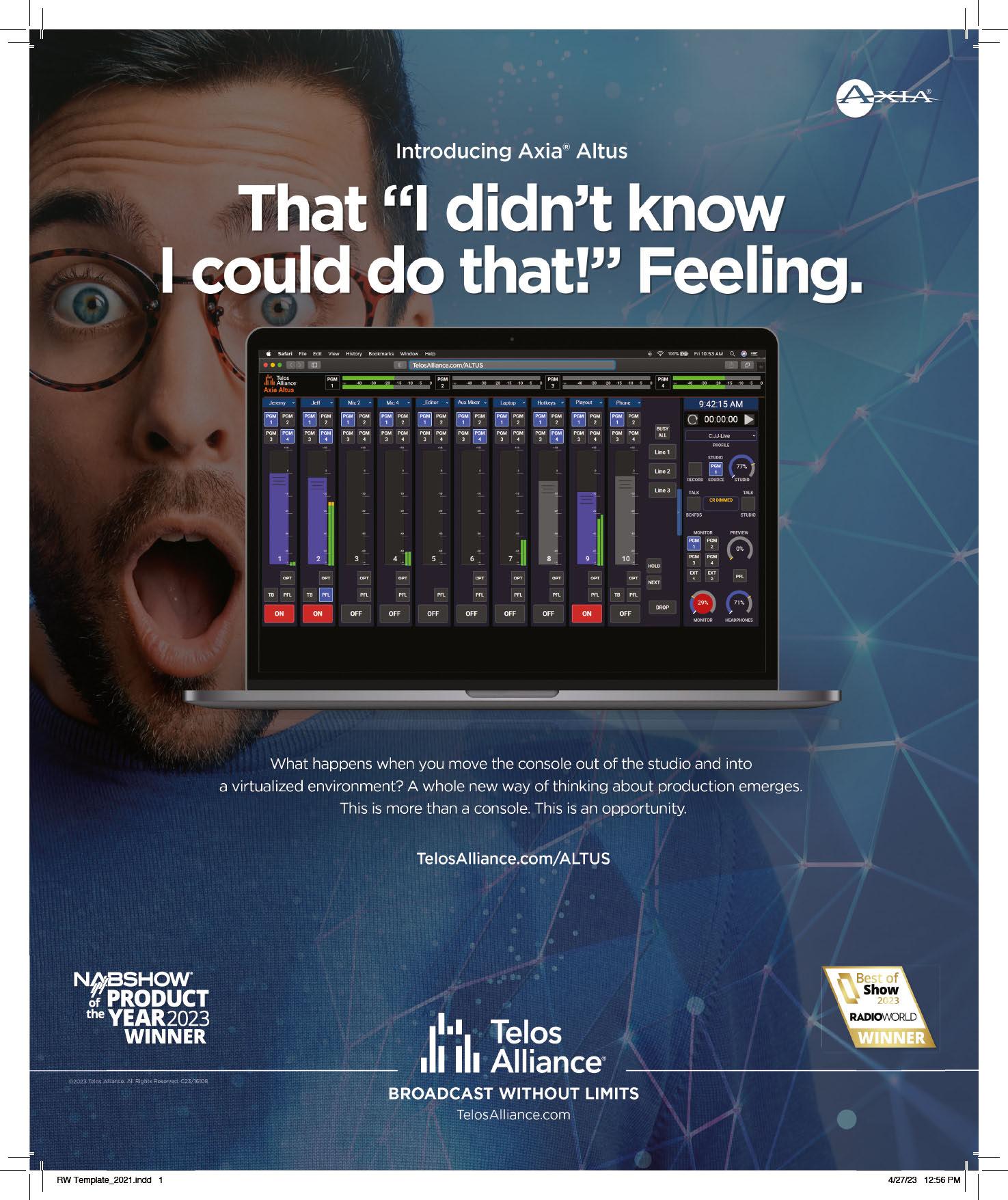
The author is in his 33rd year of writing Workbench. He handles western U.S. radio sales for the Telos Alliance and is a past recipient of the SBE’s Educator of the Year Award. Feed the tip jar Workbench submissions are encouraged and qualify for SBE recertification credit. Email johnpbisset@ gmail.com.

Oooh look at all the pretty lights!
Also: This transformer looks like a 111C, but is it?
The company that writes its name as [E3] is a developer and manufacturer of programmable RGB-backlit LCD push-button switches for control panels in broadcasting, military and industrial applications. Its name stands for Engstler Elektronik Entwicklung GmbH. Say that [3] times fast!
At the NAB Show, the company introduced several series of LCD key technology switches that include MSC Multi-Segment Color, the ability to utilize different RGB background colors in the upper and lower segments of the LCD.

Power consumption is only 25 mA at 4.5 to 5.5V.
Examples are shown. Can you imagine the visually striking control panels you can design with these lighted switches? Browse www.e3-keys.com
Identify it
I’m still getting positive comments about Western Electric 111C transformers. Glad to bring back such great memories!
Ken Lundgren wrote that he inherited several items from the late Bob Seaberg, who had been a Tektronix sales rep for 25 years, worked at broadcast organizations like WBBM and HCJB and was a frequent attendee to the NAB Show.
One of Bob’s treasures now in Ken’s possession was the transformer shown here. It’s obviously an audio transformer, but any markings are obscured by tape
residue. Interestingly, the orange text reads “Special Services Section.” That sounds sinister, but years ago, when you needed to set up equalized audio lines to connect a studio to a transmitter or a remote broadcast location
 John Bisset CPBE
John Bisset CPBE
to a studio, you dealt with the phone company’s Special Services Division.
Ken says this transformer is a little taller than the one we showed in April. So readers, any thoughts? Email them to me at johnpbisset@gmail.com
Shrink it
Rolf Taylor, principal of Rocket Engineering and Consulting, saw our recent mention of heat shrink. He has used DYMO Rhino shrink for several projects and finds it handy.
He says most heat shrink has a 2:1 ratio, meaning it will shrink by about 50% in diameter, though 3:1 heat shrink is also available. The latter is especially useful when you want to slide the shrink over a connector but still assure a snug fit. Search “3:1 heat shrink” for sources. If you have a Micro Center store nearby, look in its hobby department. (Rolf says that’s also a decent Radio Shack substitute when you
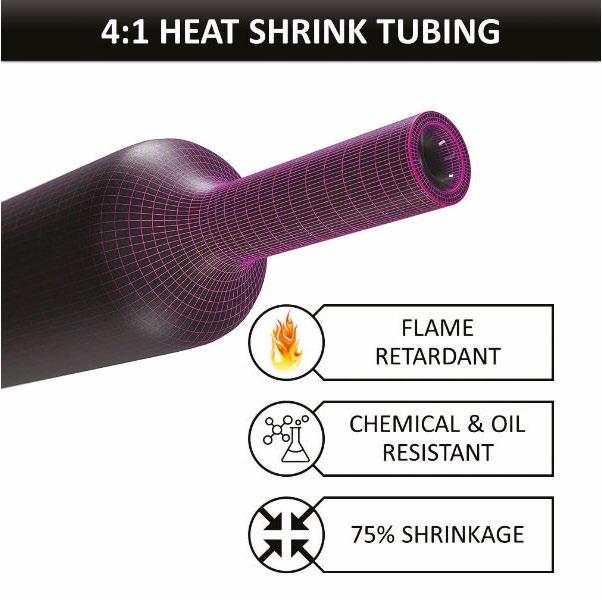
Above left An image from the CTAM website. Imagine the possibilities with 4:1 heat shrink!
Above right Keep dust out of your USB ports with these inexpensive, colorful plugs.
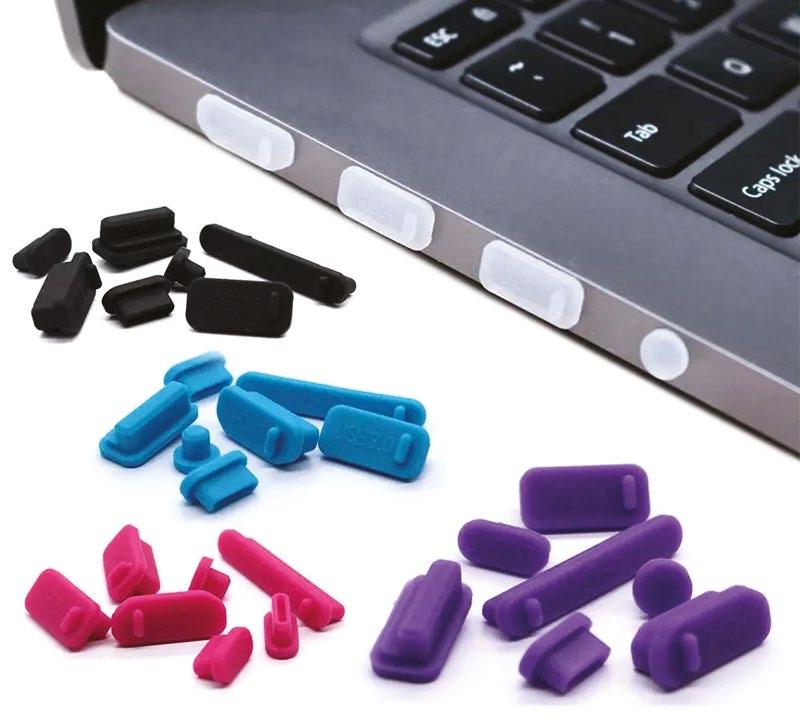
need emergency parts.)
Another heat shrink source is the website CTAM, properly called Cable Ties and More. It carries several brands; it even has some with a 4:1 ratio. Visit www.cabletiesandmore.com/
Filter it
Dan Slentz has heard a few horror stories about cell companies lighting up 5G in certain markets either unannounced or before the local broadcasters were ready. If you still find yourself in need of information about 5G filtering for C-Band satellite receivers, he recommends a free, archived SBE WebXtra video featuring John Joslin of Dawnco and hosted by Kirk Harnack. At www.youtube. com/@sbenational/videos, scroll to the video for June 21, 2021, titled “How and When C-Band Repack Impacts You.”
Put a plug in it
And Dan also has heard broadcast equipment manufacturers express concern about allowing dust into the unused USB ports on their equipment. Well, for 80 cents, why not buy a pack of 16 colorful silicon USB port covers at the online marketplace Temu? The name stands for “Team Up, Price Down.” (Today’s our day for supplier acronyms.)
At www.temu.com, type “anti-dust plug” in the search field. Dan says the funky colors will make the ports stand out. Each pack includes a variety of sizes for different types of ports. They also have plugs for computers, smartphones, tablets and other devices. Dan says his family loves the crazy stuff you will find at Temu.
“
When you needed to set up equalized audio lines to connect a studio to a transmitter, you dealt with the phone company’s Special Services Division.
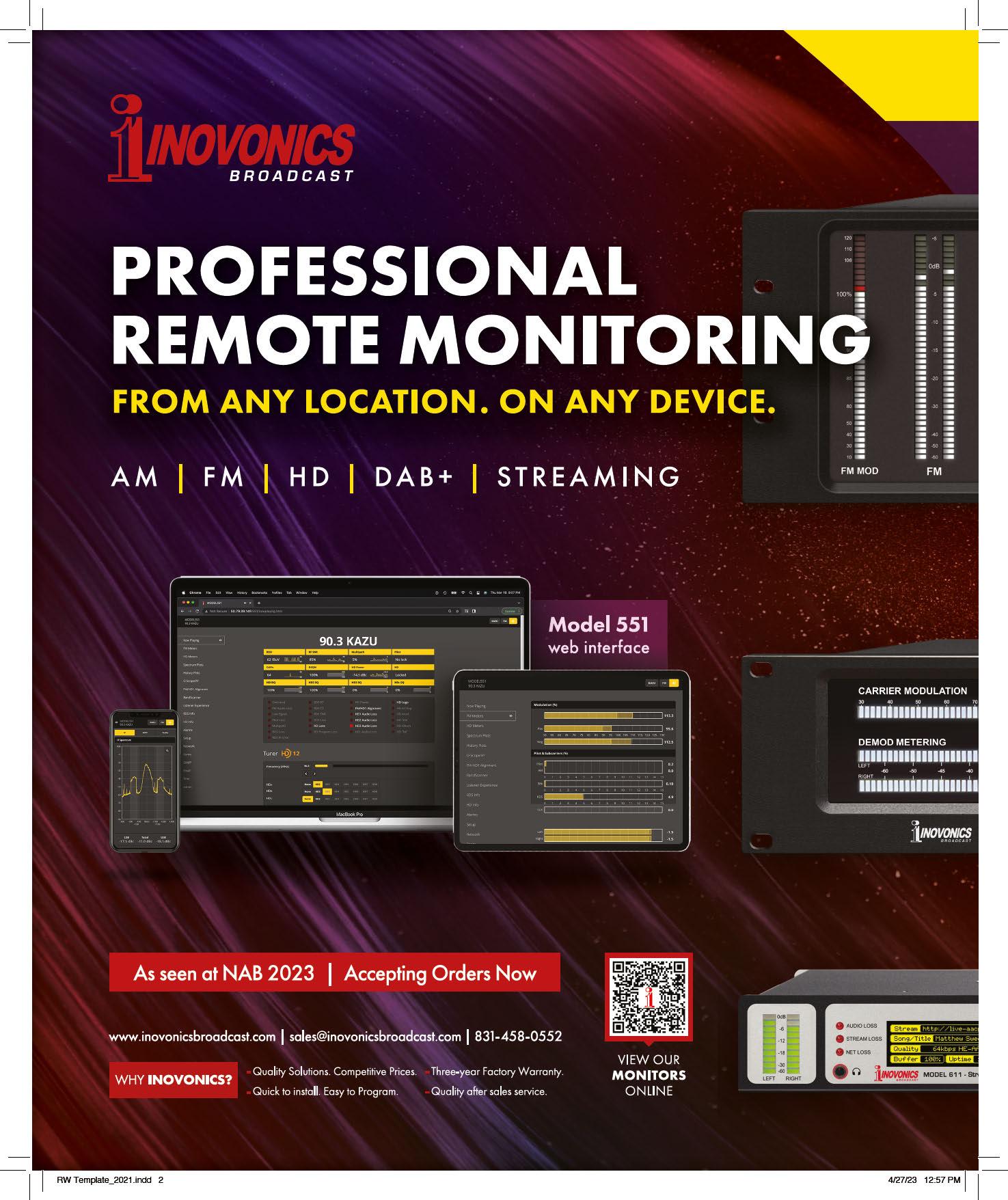
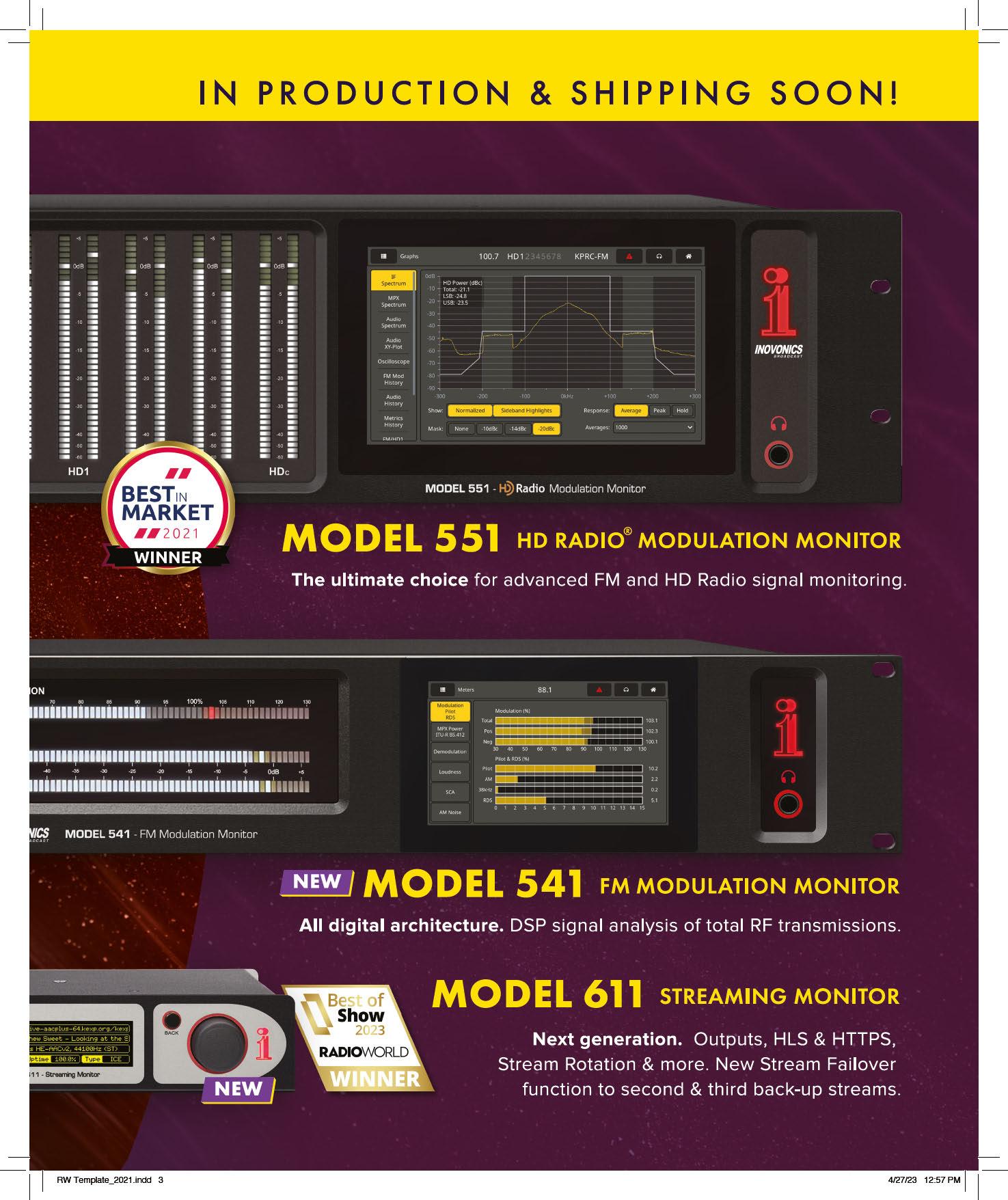
NAB Show in photos

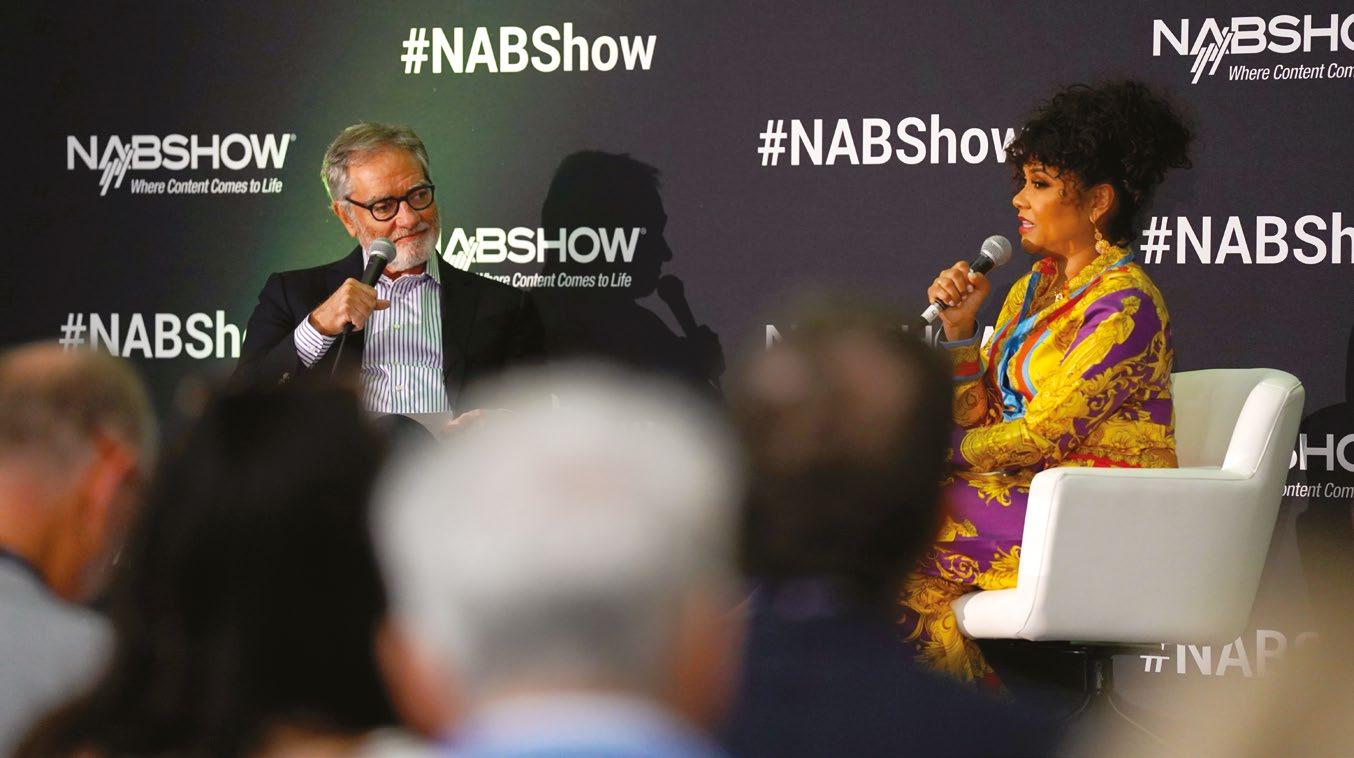
David Whitehead and his wife Bonnie, shown at right with NAB President/CEO Curtis LeGeyt, attended with support from NAB and Dream Foundation, which grants wishes for terminally ill adults. Whitehead was a radio serviceman in the U.S. Air Force and later chief engineer for the Cesar Chavez Foundation’s radio network, an audio/visual equipment repairman and telecommunications agent. He wanted to attend the NAB Show, see new products and catch up with friends.
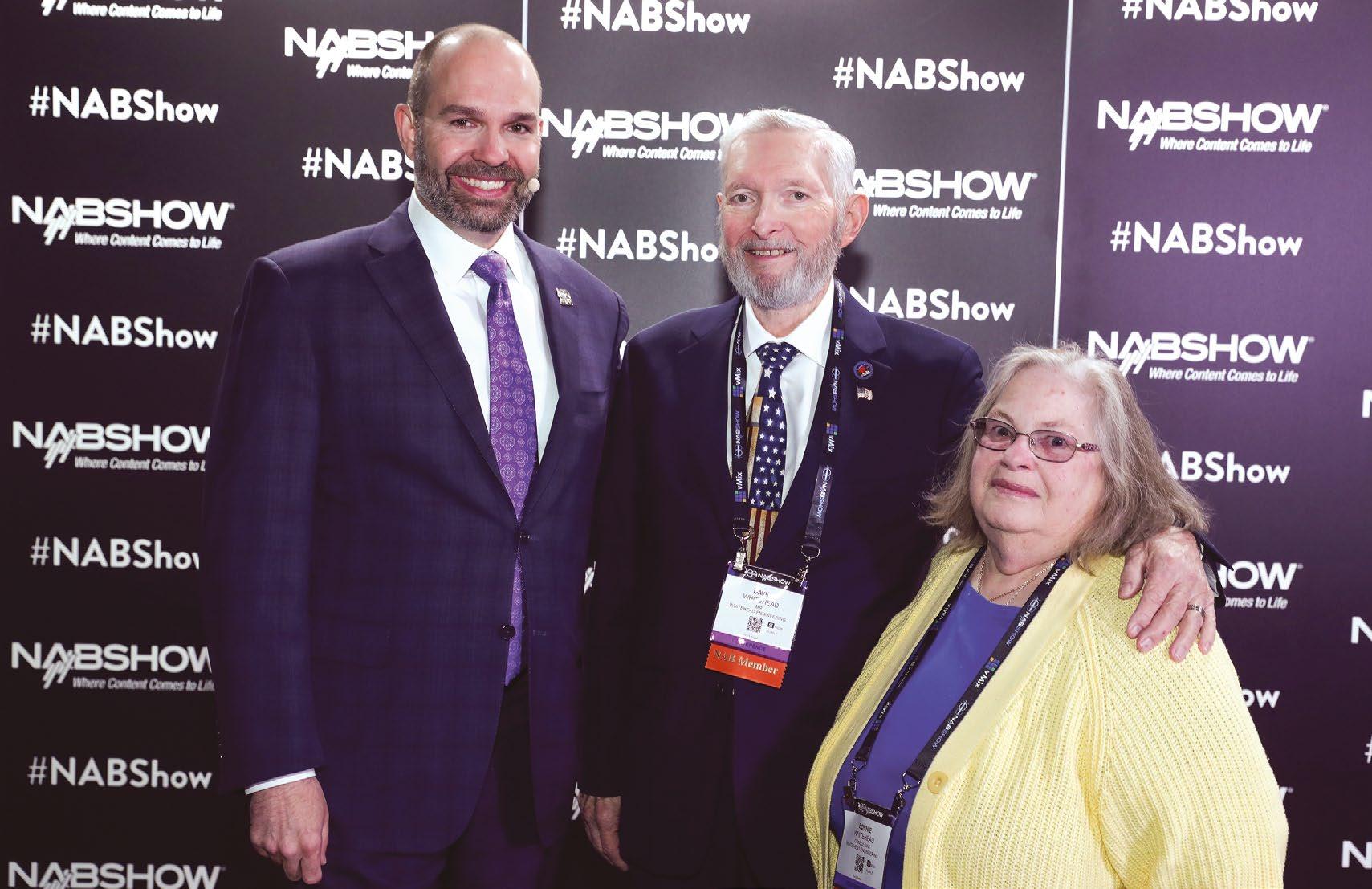
Spilling that #YeeTea: Bob Pittman, chairman/CEO of iHeartMedia, hosted radio host and influencer Angela Yee for a live podcast about marketing and the role of audio.
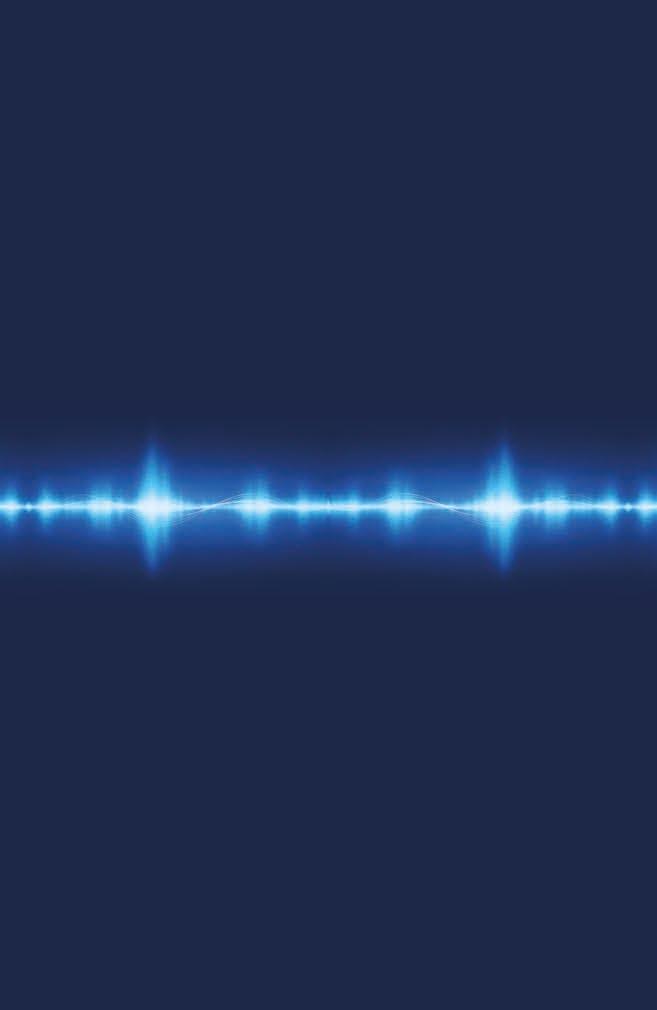
Adam Jones of Digital Alert Systems talks with Joe Milledge of KIIC(FM) in Albia, Iowa. DAS is set to release software updates for its DASDEC line; part of the reason is to comply with a deadline that the FCC has set to implement upgrades for the clarity and accessibility of EAS messages. (Regardless of who your EAS vendor is you should check with them to make sure you get the required updates by the December deadline.)

Paul Shulins, below left, gave a talk about his tour of 70 multiplexed TV and radio sites within a three-month period to install his Stellar Eclipse Site Monitoring and VSWR Protection system for American Tower Corp. He’s with Jim Stenberg, president of JS Engineering.

Why? Why not? Chucky the Doll on the commercial alley between the Linq and Flamingo.
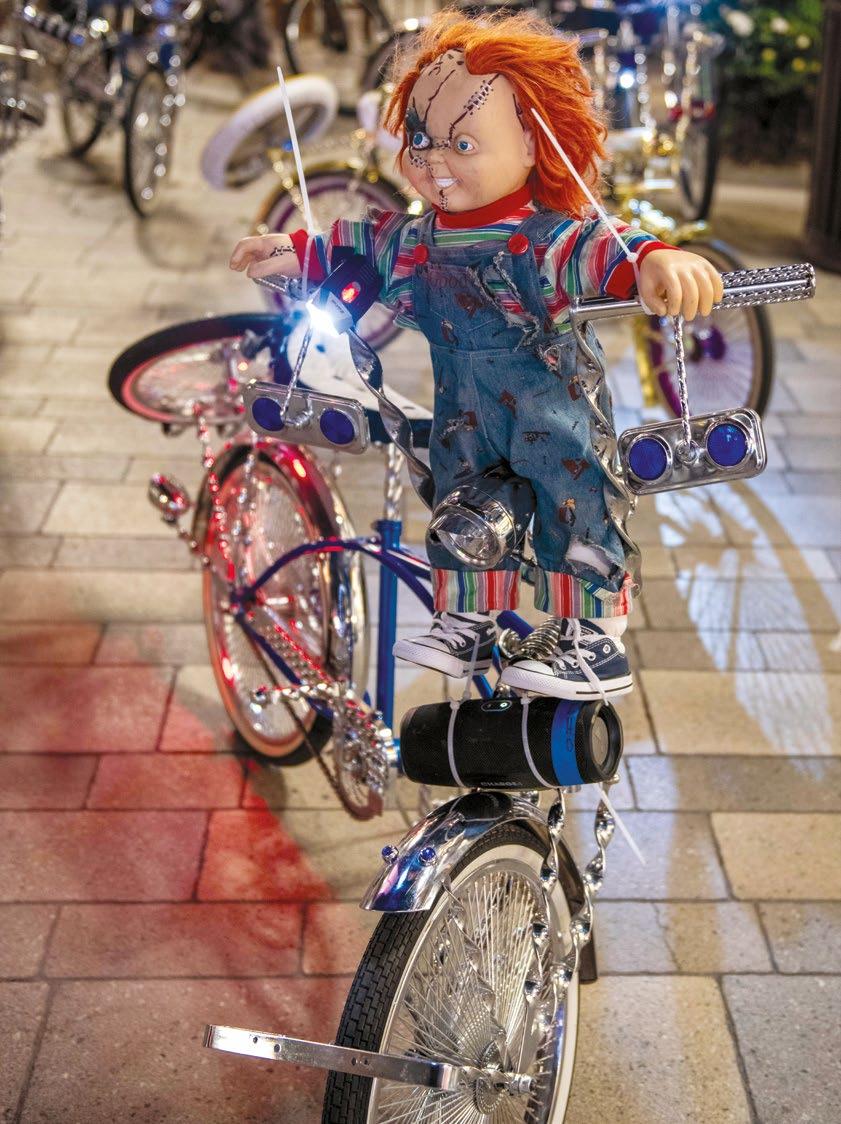 Legos make for a great demonstration of video equipment.
Photo ©NAB/Chris Alden
Photo ©NAB
Photo ©NAB/Chris Alden
Photo by Jim Peck
Photo by Jim Peck
Legos make for a great demonstration of video equipment.
Photo ©NAB/Chris Alden
Photo ©NAB
Photo ©NAB/Chris Alden
Photo by Jim Peck
Photo by Jim Peck

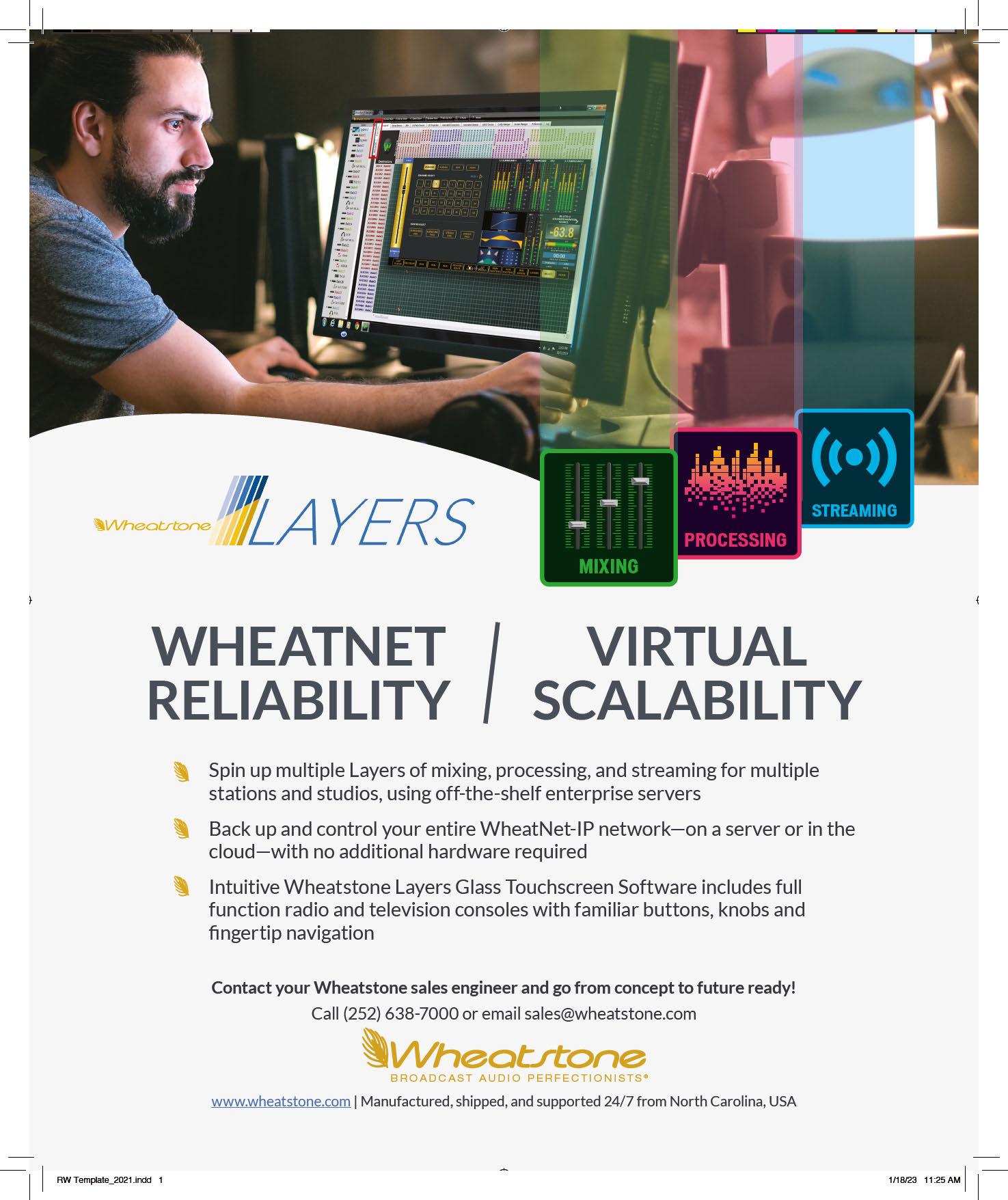

MaxxRadio was a pop-up radio station created by MaxxConnect Group, partnering with Beasley Media, SurferNetwork, Radio World and RadioInsight. It began streaming April 1 and was heard in Las Vegas on Beasley 96.3 KKLZ-HD2 for several days. Front row: Isis M. Jones, Emily Hager, Heather Jeffcoat, Joe Myers. Back row: Lance Venta, Josh Bohn, Matt Levin, Josh Jones, Scott Brady. Not pictured: Chris Roth and Micah Dempsey.
Xperi recently launched the Broadcaster Portal for its DTS AutoStage hybrid radio platform. Screens in the booth showed examples of the data and analytics available to stations about listener behavior.
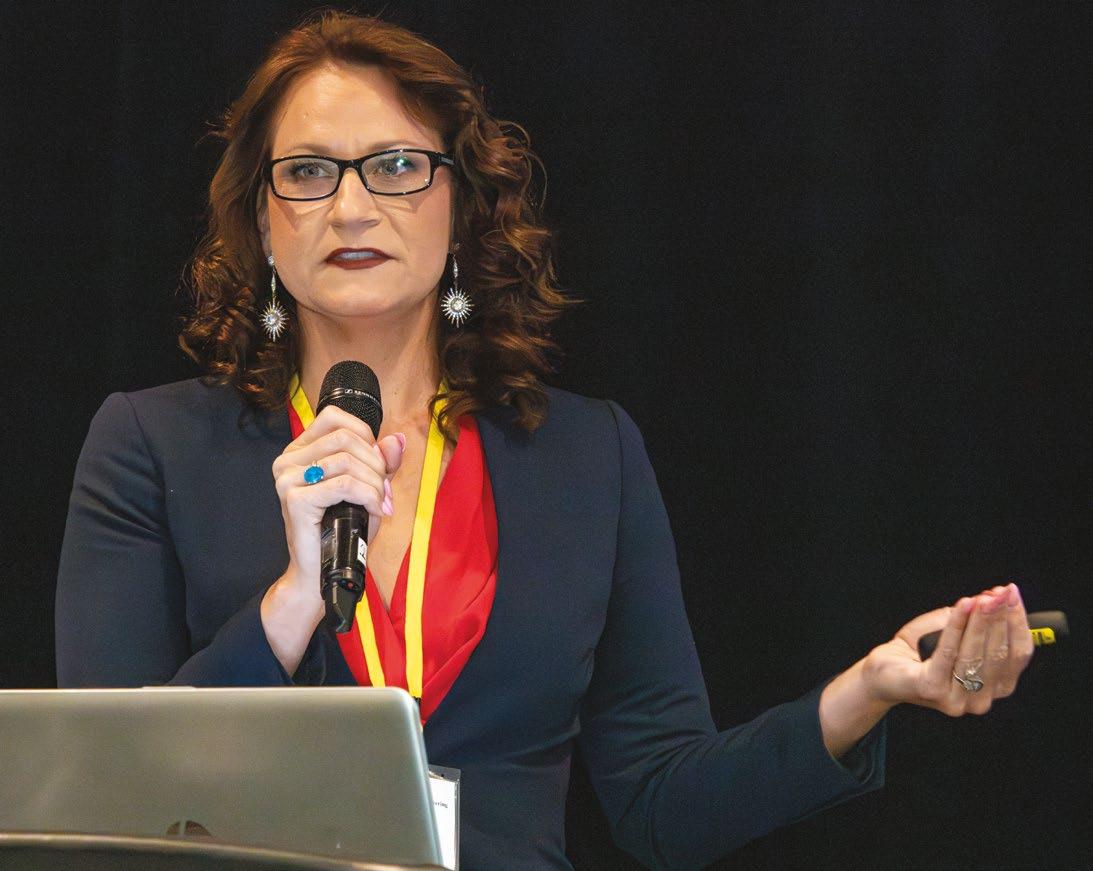

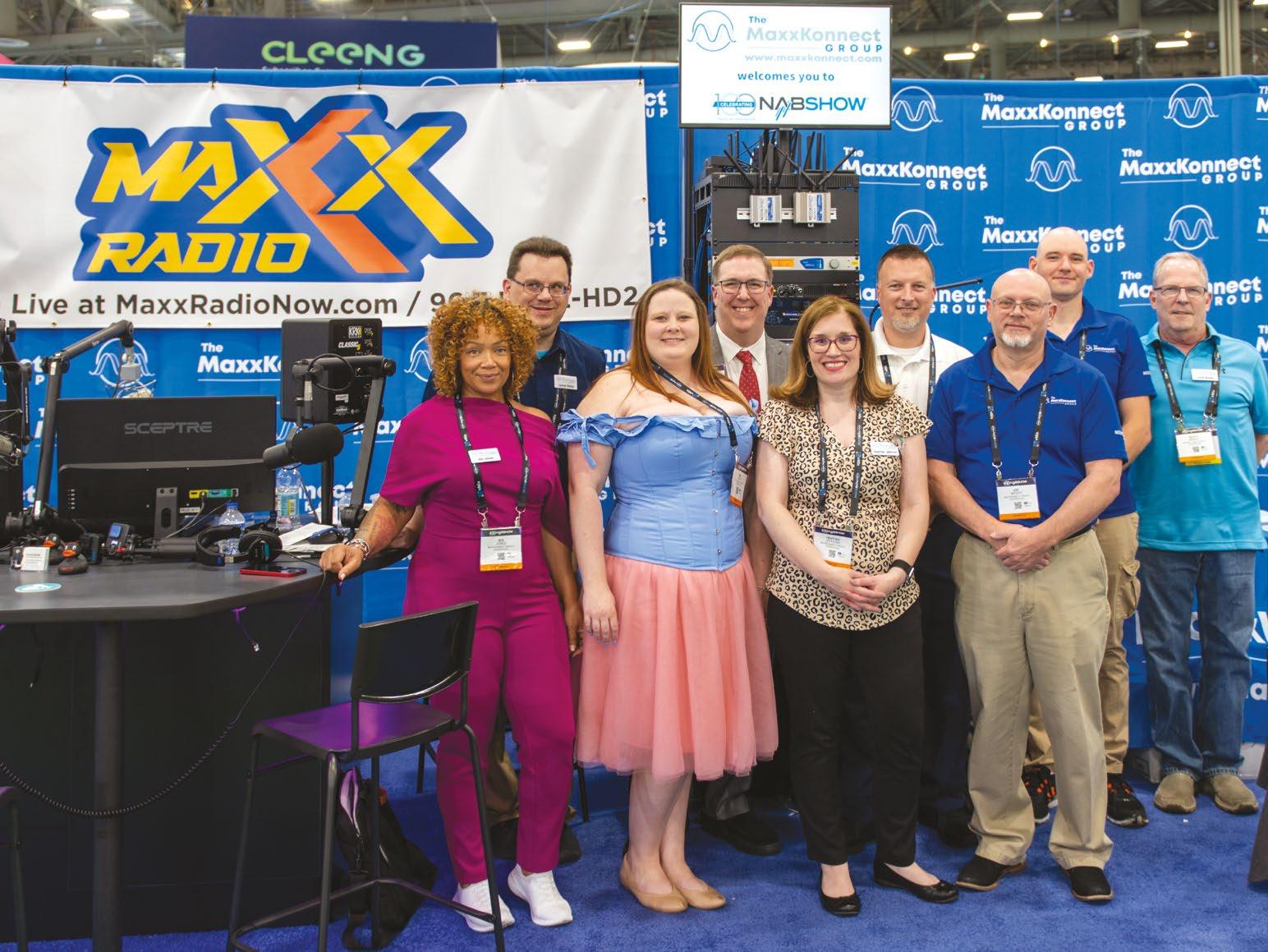
Bobbito García and Adrian “Stretch Armstrong” Bartos are the newest members of the NAB Broadcasting Hall of Fame for radio. NAB called their show “a 1990s hip-hop radio phenomenon.”

In the Broadcasters General Store booth, Jeff Schick of Sprite Media highlighted digital signage products.

Some serious engineering experience in this group. John Kennedy, Ben Hill, Joe Geerling and Sam Cappas chat on the floor.
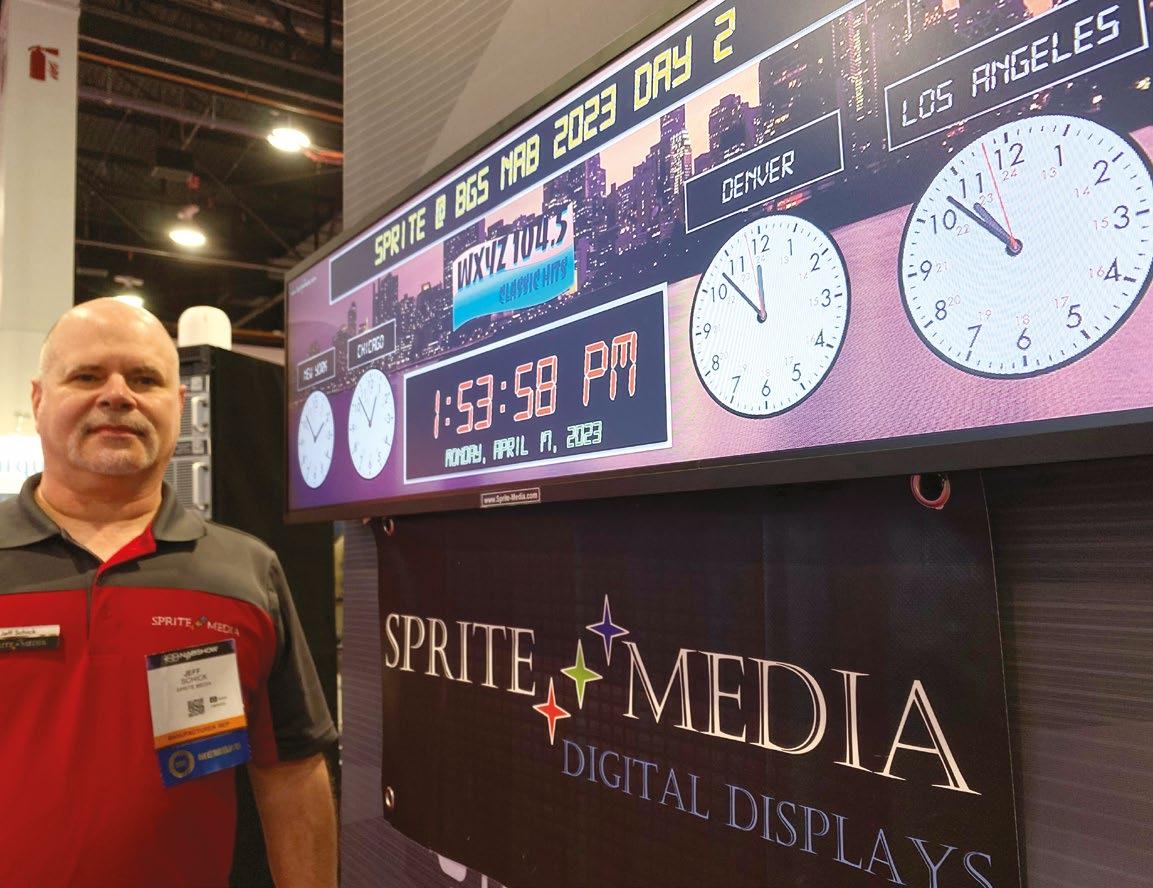 Photo by Jim Peck
Photo by Paul McLane
Photo by Jim Peck
Photo by Jim Peck
Photo ©NAB/Chris Alden
Brittany Hilton of Synthax and Digigram talked about applications of cloud technology at the Public Radio Engineering Conference.
Photo by Jim Peck
Photo by Paul McLane
Photo by Jim Peck
Photo by Jim Peck
Photo ©NAB/Chris Alden
Brittany Hilton of Synthax and Digigram talked about applications of cloud technology at the Public Radio Engineering Conference.
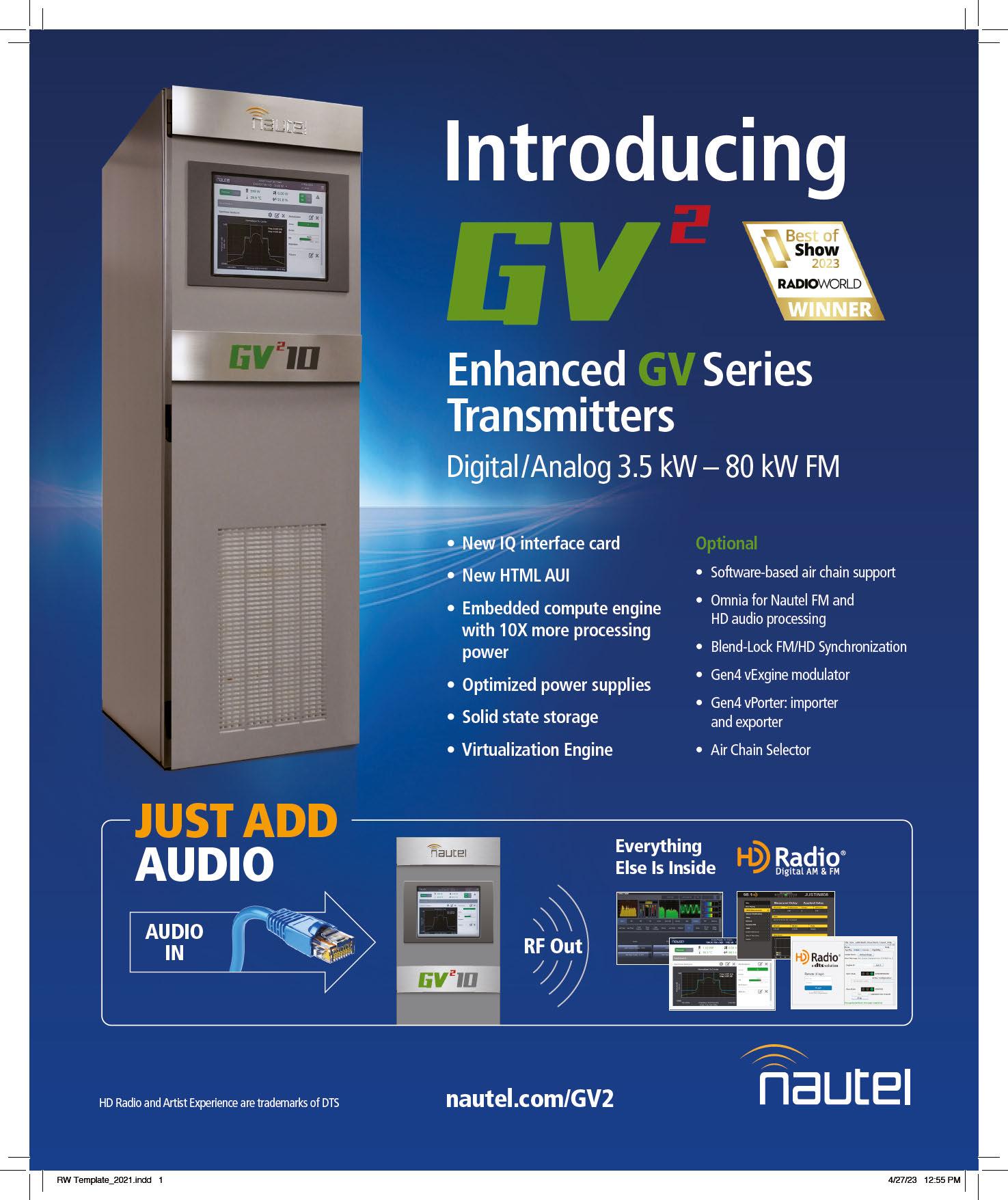 Writer Donna L. Halper
Writer Donna L. Halper
Radio and the blind: an evolving relationship
Modern trends challenge the medium’s role in lives of the visually impaired
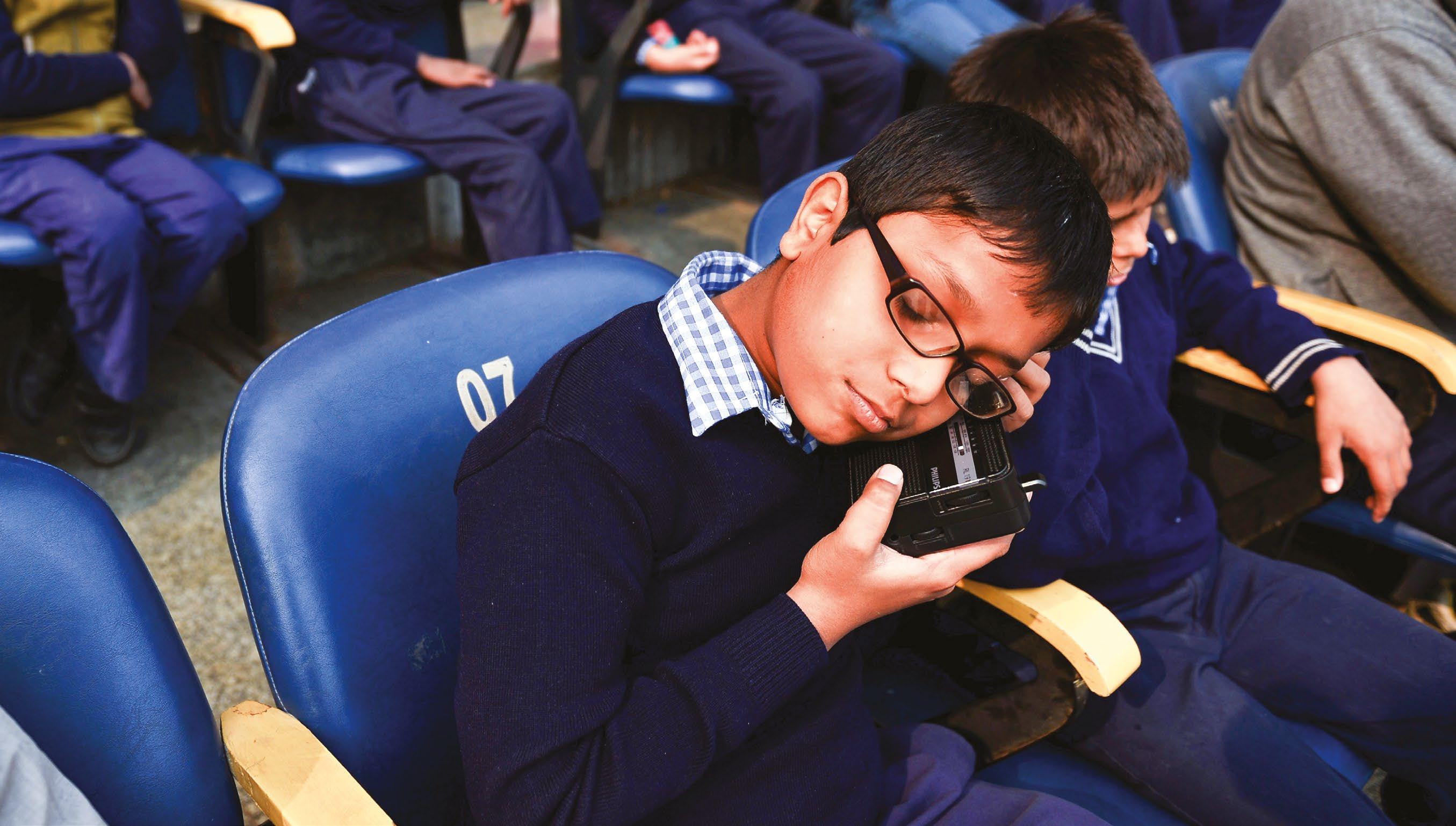
In the 1920s, newspaper articles called radio a godsend for the blind. It was both educational and entertaining, and it would help them to feel less isolated.
Today, many people with visual impairment live independent lives and enter a variety of occupations, including broadcasting. Thanks to technologies like screen-reading software, most internet websites are accessible. And a growing number of movies and television programs now have audio descriptions.
So what role does radio play in a world in which blind people have so many information and entertainment choices?
“It all comes down to how you
define radio,” says Rick Morin, manager of ACB Media, operated by the American Council of the Blind.
Media consumption patterns among the blind reflect those of the population at large. Morin grew up in Springfield, Mass., in the 1960s, and he loved AM top 40, but he is well aware that listening habits have changed.
“Most blind people I know still listen to some [terrestrial] radio, but … there has been an explosion of electronic content that is available on internet radio and podcasts.”
Peter Altschul is an author and motivational speaker who co-hosts a weekly podcast. He grew up in New York, where he listened to AM top 40 deejays like Dan Ingram and sports announcers like Phil Rizzuto and John
Sterling.
“The announcers back then made you feel as if you were there. They gave vivid descriptions,” he said.
These days Altschul lives in Columbia, Mo., and still listens to sports radio, which “is as good as what I listened to growing up.” But he misses the live and local stations and the personality deejays he heard as a kid. He gets most of his music from satellite radio.
“SiriusXM has much more variety and fewer commercials,” and best of all, “there are no political ads.”
“The same songs over and over”
Doug Hunsinger too finds his local radio stations more political and less informative than he would like.
Associate professor of communication and media studies at Lesley University, and a former broadcaster and radio consultant. Above A visually impaired child listens to commentary of an India vs. Australia cricket match over a portable radio in New Delhi in 2014. The proliferation of other audio media forms has challenged the special relationship that broadcast radio long had with the blind community.The retired government employee, 69, lives in Pittsburgh but grew up in Virginia. His memories include personality deejays and listening to distant stations at night, when the local daytimers went off the air.
Radio was almost like an obsession in those days. “I carried my transistor everywhere.” He recalls telephoning the local deejays to make requests. He finds local AM dominated by conservative talk. “There isn’t as much local news on radio as there used to be. There’s more news on TV than on radio.” As for FM, he finds that most music stations “play the same songs over and over.”
Like Altschul, he gets his music from SiriusXM, and he sometimes listens to internet radio.
The change of a beloved radio format can also push a loyal listener away.
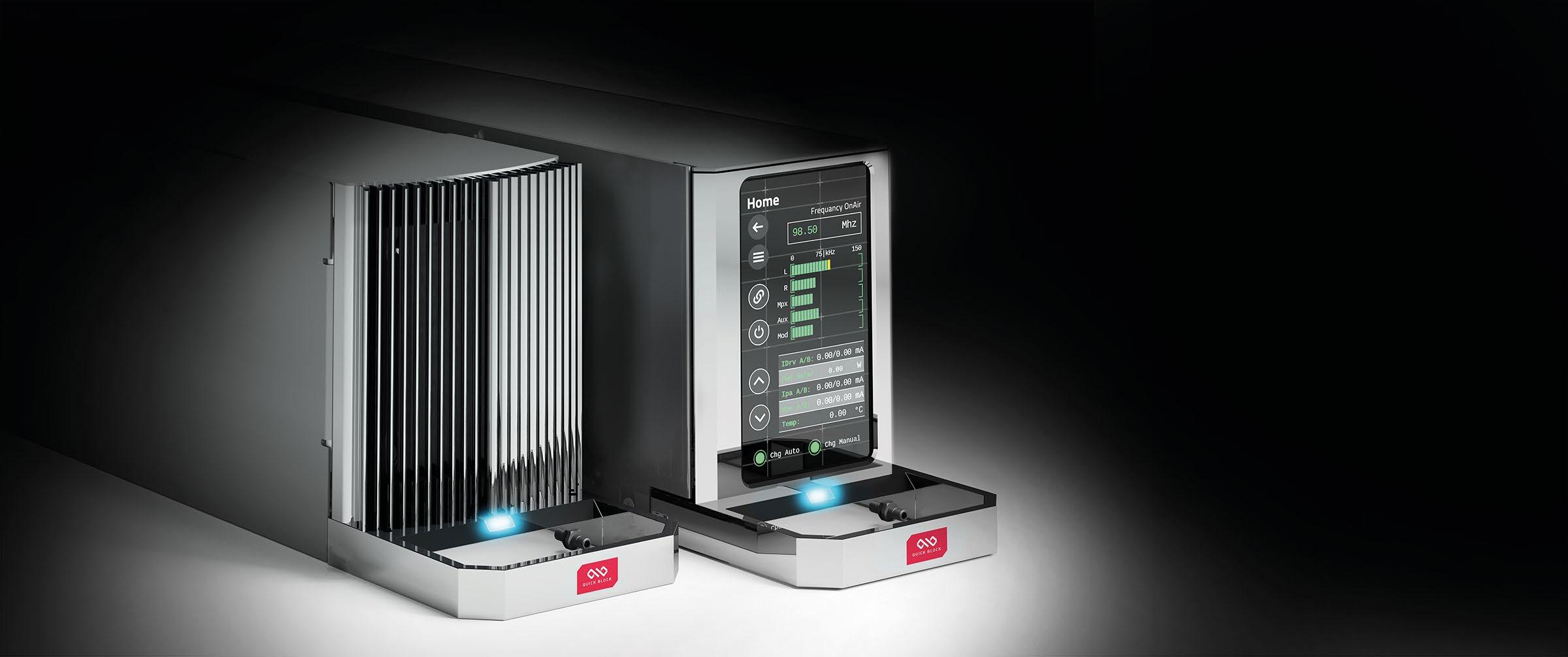
Ann Chiappetta, 58, is a retired therapist who grew up in New Rochelle, N.Y. “In the 1970s and
Radio Audiences
1980s, it seemed the radio was always on. I listened to FM because AM was for old folks.” Her favorite was a Long Island album rocker that played many songs no other stations did. She listened for years, but then one day circa 2004, the format she loved was gone.

“When it went off the air, it was a great loss. After that, my connection to radio began to change.”
She still listens to radio, but not as frequently as before — “mostly news on NPR, and sometimes sports radio.” But for music, she prefers to choose her own, or she seeks out internet stations. “I use my computer to interact with the world. I have my music on my phone. I’m always plugged in somewhere.”
Another common thread is frustration with a lack of variety on most terrestrial stations.
Walden Hughes lives in Costa Mesa, Calif. “I lost my sight at age 9, and radio became very important in

my life.” He liked country music and sports, but he also found talk shows educational.
“The 1970s and 1980s were the golden age of talk radio. There were great debates about issues, and no name-calling. I could learn from it.”
Today, the 56-year-old listens to C-SPAN Radio, but he finds most current talk shows too argumentative. Plus, “There are too many nationally
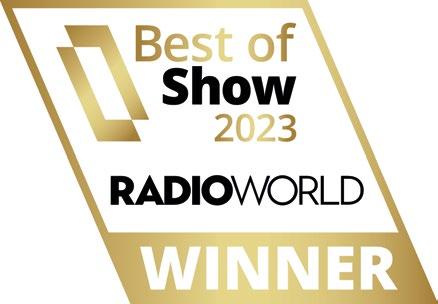 Above Ann Chiappetta
Above Ann Chiappetta
syndicated hosts, and not enough who are local.”
Hughes also loves “golden age” radio, especially radio drama, so he decided to do something about it: He operates a popular internet station, Yesterday USA, which features oldtime radio shows.
His friend Larry Gassman, 68, lives in Fullerton, Calif. Gassman and his twin brother John co-hosted a weekly OTR show on a Pasadena station for several decades, and are still streaming on the internet.
Gassman recalls that when he was growing up, there were many live and local stations, and “the announcers talked to you. Even the talk show hosts were more laid back. I used to be able to listen to radio for hours at a time.” Now, local radio sounds generic. “A lot of it is on satellite. And there’s a lot of voice-tracking. As good as [the announcers] might sound, I can always tell that they’re not [local].”
Ken Meyer is another former terrestrial broadcaster who now utilizes streaming audio. Meyer spent 14 years at WBZ Radio in Boston, where he became well-known for booking guests for popular talk show host Larry Glick.
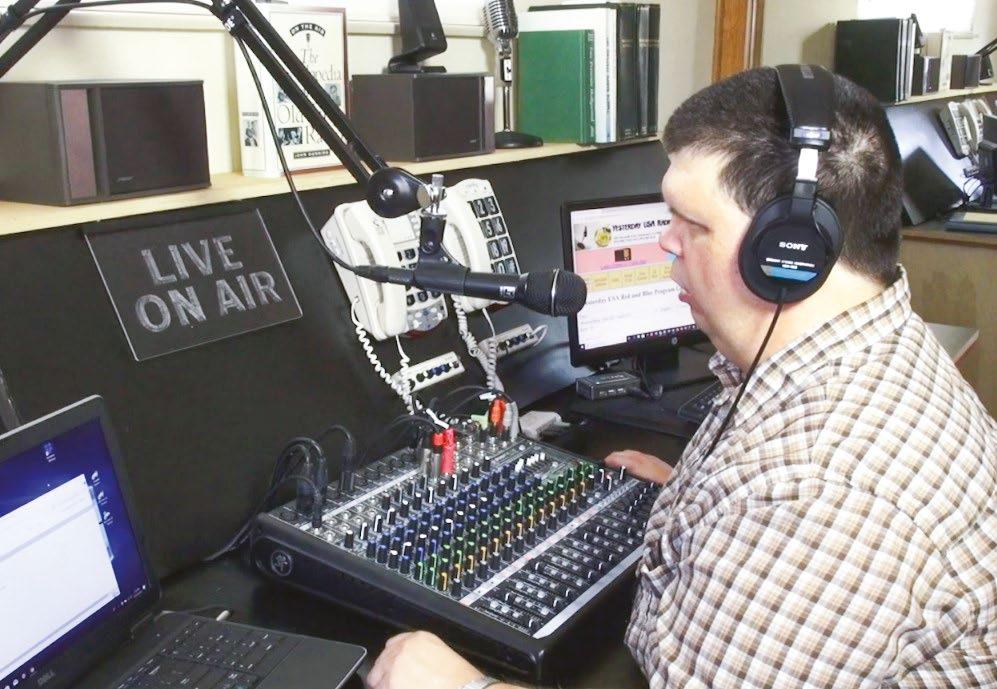
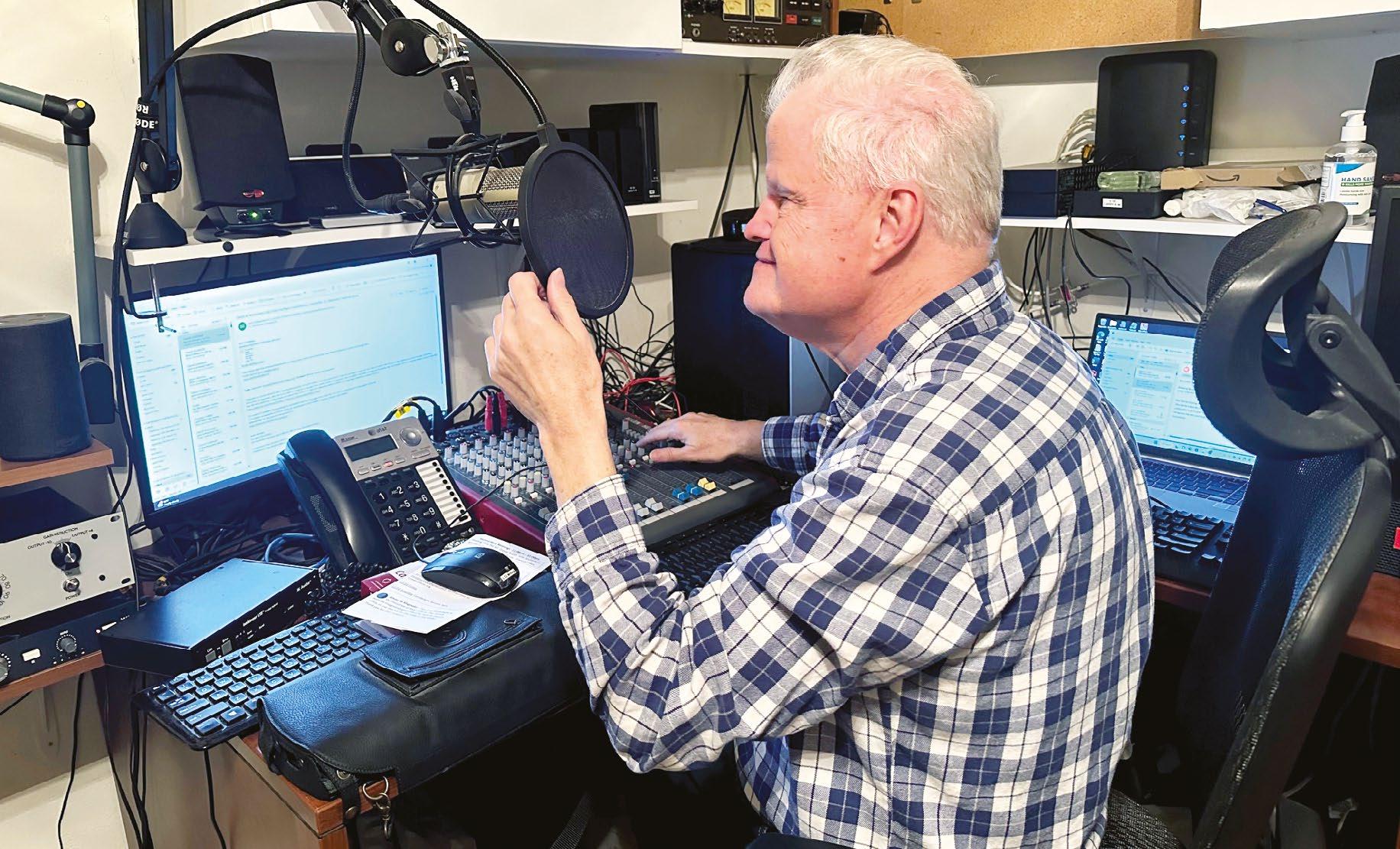
Growing up in Rochester, N.Y., Meyer, 76, remembers that “I always loved radio, from the time I was a kid. I used to pretend to be a deejay.” And like Doug Hunsinger, he enjoyed tuning in late at night.
“There used to be something magical about picking up distant stations.” In fact, WBZ could be heard in 38 states, and other clear-channel
stations came in loud and clear too. Now, thanks to streaming, he can listen live online to stations from anywhere. There might be less romance in it, but there’s no static. And there’s another benefit: the ability to reach a national audience. Meyer hosts a podcast for WBCA, Boston Community Radio, a low-power FM station, and his podcasts are accessible via the internet.
Many forms of radio
To younger respondents, terrestrial radio is just another outdated technology.
Steph Brown, 22, a student of the author at Lesley University in Cambridge, Mass., recalls, “I used to listen to the radio in my parents’ car” and nowhere else.
“As I was growing up, I noticed that only older blind people still thought radio was important. People my age had stopped relying on it. In fact, I
don’t know many people my age who still listen to radio.”
Brown enjoys podcasts but terrestrial radio is not an option. “I don’t like the commercials and the repetition. I like to choose my own songs.”
Jessica Hodges, a 26-year-old from St. Paul, Minn., also listened to radio in her parents’ car. She developed a love for classical music, but she says she can’t find enough variety locally because “the stations that play it are all [affiliates] of Minnesota Public Radio,” resulting in a certain sameness on the air.
She no longer listens much. “I can get what I want from streaming services,” she says, and enjoys being able to curate her own playlists.
“I use my computer to interact with the world. I have my music on my phone. I’m always plugged in somewhere. ”Top Larry Gassman
Reading services
Despite these trends and challenges, radio remains important for many in the visually impaired community, especially older ones. Some rely on reading services to keep in touch.
“Most of our listeners are seniors who have experienced a vision loss later in life,” said Maryfrances Evans, president of the board of the International Association of Audio Information Services. She also is executive director of IRIS, the Iowa Radio Reading Information Service for the Blind.
“Though technology offers all kinds of delivery choices, our listeners grew up on radio. They are a ‘don’t fix it if it ain’t broken’ generation, and radio continues to serve them well. It is familiar, it can bring them the hometown high school football game or the national news. Radio does not require a password, monthly fee or download — just turn the knob and it is there.”
One of the most dramatic consequences of vision loss, she said, is social isolation. “Radio, especially smaller local stations, keeps listeners connected to the social fabric of their community.”
For the reading services, radio — including FM subcarriers — remains critical distribution infrastructure.
“Many of our stations, including right here in Iowa, broadcast on the SCA side of these stations,”
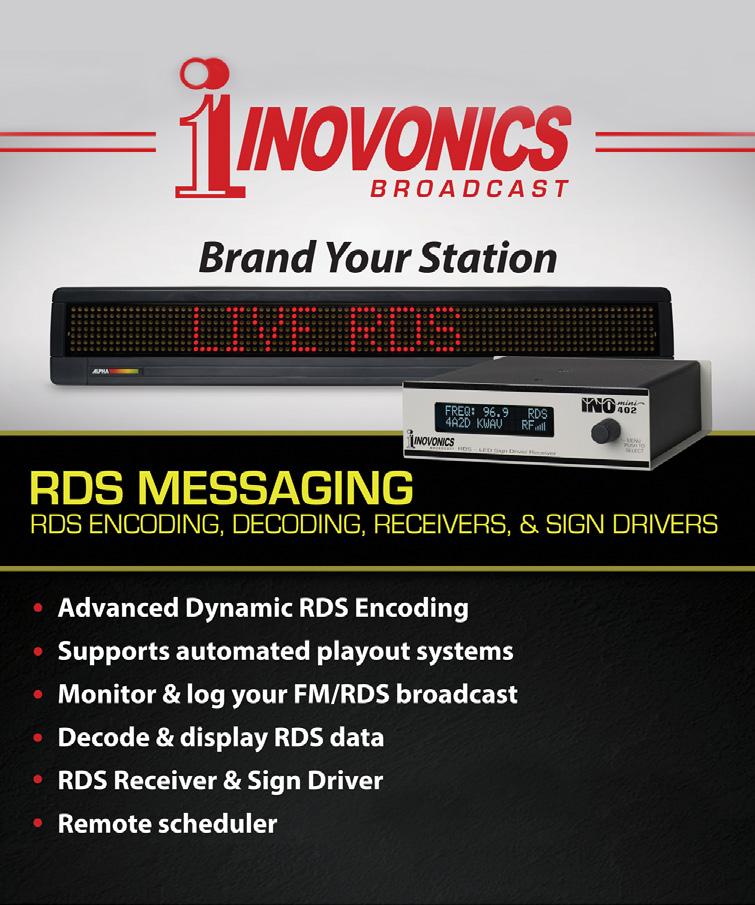
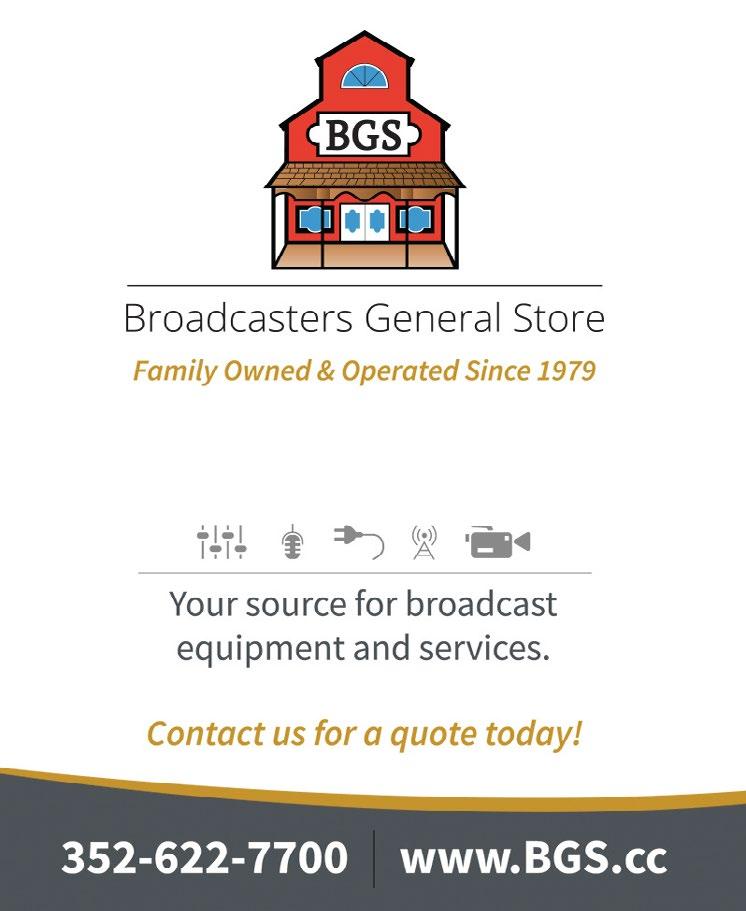
Radio Audiences
Evans said.
“Iowa Public Radio considers IRIS an extension of their mission. Most of our reading services now have internet delivery options, but those custom SCA radios remain the dominant delivery solution for our listeners. They know how to use a radio. They don’t have to pay for internet service, if it is even available in their rural area.”
Multimedia
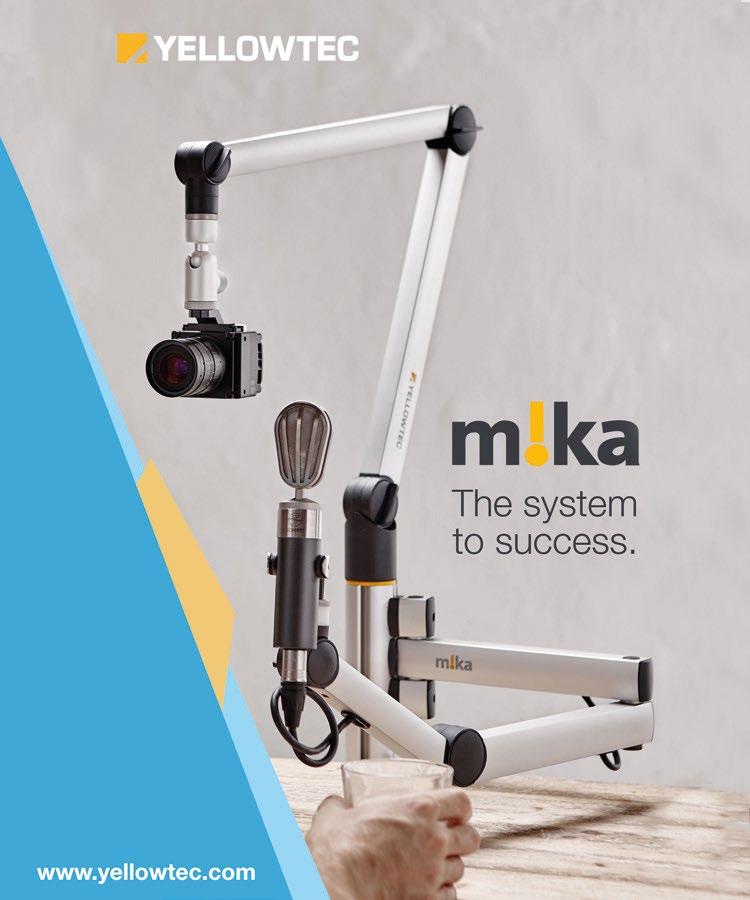
As Rick Morin of ACB Media reminds us, all of this just proves the point that “radio” can mean many things, and that blind people are using it in different ways.
ACB Media exemplifies this evolving definition. Until April 2022, it was known as ACB Radio. The name was changed to reflect the availability of 10 live internet audio streams, which offer various kinds of content.
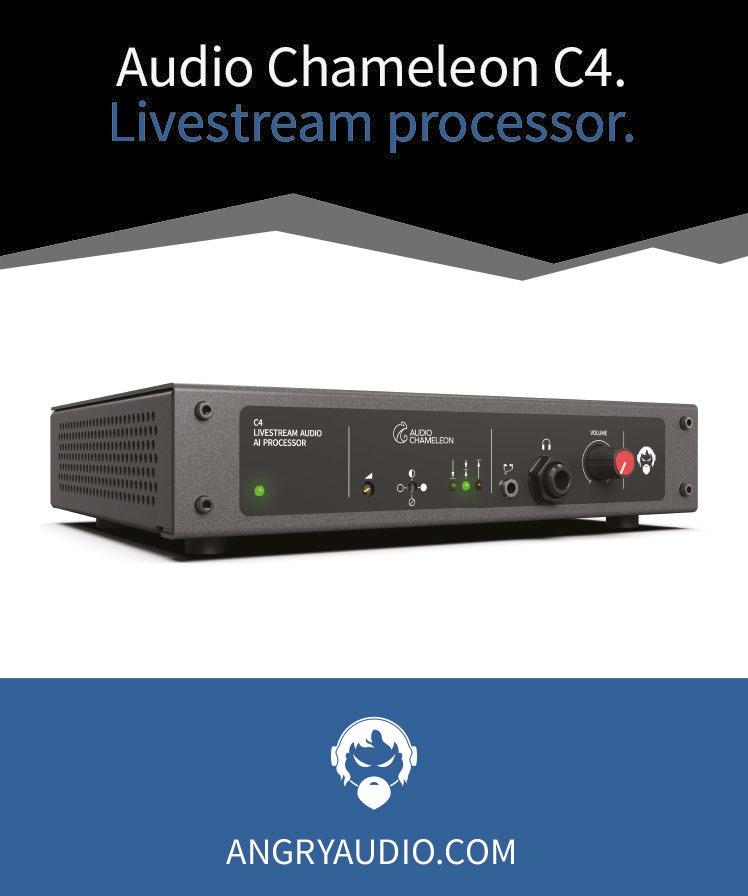
“All of our programs are by, for and about blind people.” Those programs include talk shows that focus on issues affecting the blind community, but there is also a channel that features music by blind artists.
These days, the media landscape is dramatically more competitive than in the past. While OTA radio is no longer the dominant mass medium, radio and audio in all of their forms are a valuable resource, one that many blind people continue to utilize as listeners, content creators or both.

About Buyer’s Guide
The Buyer’s Guide section appears in every other issue, focusing on a particular category of equipment and services. It is intended to help buyers know what’s on the market and gain insight into how their peers are using such products.
ADJA in Senegal deploys winCam
Studio combines visual radio with winMedia playout and a DHD console
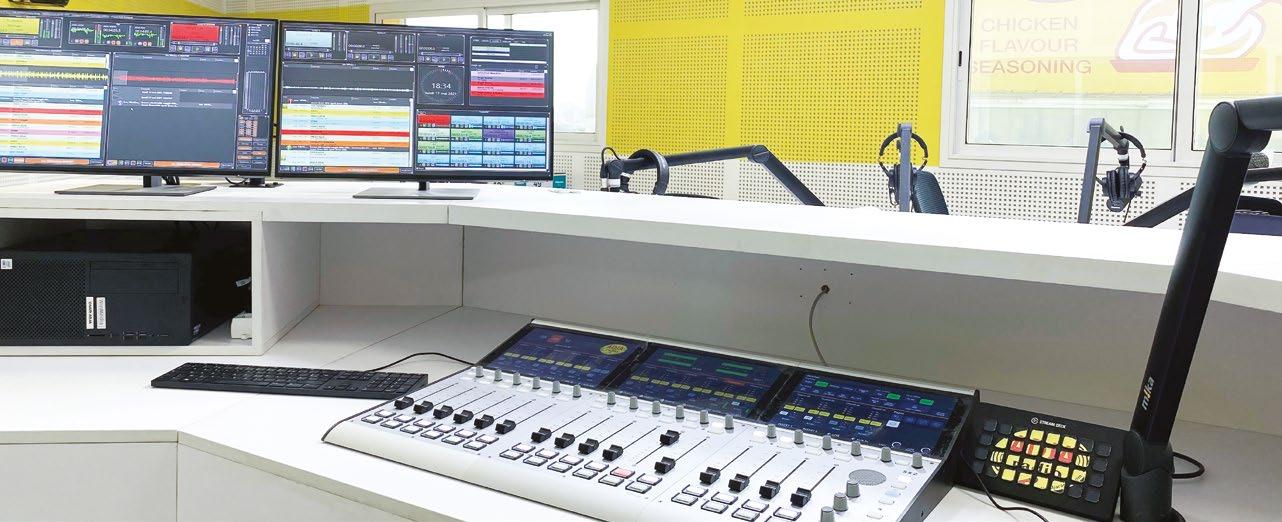
The winCam system from winMedia provides automatic video camera management and production solutions for radio, TV and event environments.
The latest version of winCam, paired with winMedia playout, is in use at ADJA Radio, a Patisen Group media project in Dakar, Senegal.
The air studio, equipped with 4K PTZ cameras, is capable of individual shows as well as duplex transmission. It integrates a DHD audio console for interactive commands and control of winCam and winMedia.
ADJA’s team can control the zoom speed of the PTZ cameras from the winCam’s main user interface. Features include access to external sources for visual identity graphics; live camera preview within the PTZ adjust tab; individual dedicated titling tabs associated with each camera; and videofollow-audio live camera changes.
The station can broadcast
their programs on-air and on up to three social media channels simultaneously. The winMedia software can play audio on a radio console and video at the same time for broadcasting on television channels; and winCam can manage the automatic production of 4K PTZ cameras based on detected sound levels of the microphones.
“The entire system is based on audio over IP with DHD consoles, and on NDI for the video part, thus
Tech Update
giving this installation a unique technological advance on the market,” the manufacturer says.
“Furthermore, the integration with the winMedia audio or video playout systems is even more refined, allowing the winMedia-winCAM users to imagine and create their own auto production algorithms or scenarios according to the requirements of every talent or show producer.”
A live feed is provided at http:// adjaradio.com.
Vislink IQ vPilot Creates Professional Multicamera Productions
“With the Vislink IQ vPilot solution, anyone can be their own news, TV or radio channel.”

Vislink says its technology puts the tools of professional content production “in the hands of the masses,” increasing flexibility and reducing costs.
Applications for this automated studio system include radio station web streaming, roundtables, live webinars and podcasts, and house-of-worship broadcasting, without a need for camera people or an onsite director.
vPilot includes features such as AI and automated script run-down. Artificial intelligence allows vPilot to direct cameras and automatically switch between shots based on who is speaking and their importance within the discussion. Graphics, dynamic ticker tape, overlays and video insertions can be added by presenters.
Info: www.vislink.com/product/iq-vpilot
Tech Update
Camera One Is an Affordable Visualization System

Broadcast Bionics says its tools help broadcasters generate likes, views and shares by visualizing their best radio content. “Now Camera One offers visualization at a price that every studio can afford, in a package simple enough for any content creator to use,” the company says.
“Audio content from every show, studio and podcast can be watchable and shareable.”
Using the affordable Blackmagic Atem Mini video switcher, Camera One can automatically live switch up to eight HDMI or SDI cameras as well as offering recording, editing and streaming to Facebook and YouTube.
With ISO recording, Camera One provides individual recordings from each camera along with an edit decision list to enable content to be recut and repurposed using

popular video edit software.

Camera One is a simple software service running on Windows. Control for switching and access to media files is possible from any browser from every device across a network.
It integrates with network audio to offer intelligent audio switching with Axia Livewire and Wheatnet-IP or using a sound card to support traditional analog audio consoles. Video clips are cut and captured automatically, using the same algorithm that Bionic Director uses to deliver natural and seamless edits.

Bionics highlights its affordability and its ease of setup and use, with a clear, simple visual interface.
Info: www.bionics.co.uk/ CameraOne.cshtml

Tech Update
Tech Update
ENCO Expands Its Visual Radio Offerings
With the recent acquisition of Rushworks, ENCO Systems offers its own U.S.-made multi-camera and graphics video solution to the radio market.
VDesk with Talk-Take is a Windows-based integrated system allowing users to automate most aspects of the process, including one-shots, two-shots, group shots and wide shots; dwell time and logic; intro and outro graphics; logos and titles; and pre-recorded video playout.
AxelTech VJ Pro Live Enhances Visual Radio
To support several Spanish Broadcast System stations, AxelTech developed a new version of its VJ Pro Visual Radio Automation System.

“VJ Pro Live improves the camera management functions by adding microphone level to the parameters for automated management of camera switching,” the manufacturer said.
“The use of different parameters beside the fader status (on/off) is part of the new Smart Director mode, which allows smoother automation and direction of the camera through different speakers and guests.”
VJ Pro Live is being used by Ritmo 95.7 WRMA(FM) in Miami, the beta tester. It also will be installed in SBS stations Amor 93.1 WPAT(FM) in New Jersey, Mega 97.9 WSKQ(FM) in New York and Radio Mega Global Podcast.
The CG core of VJ Pro Live manages program graphics and animations as well as the animated background of the studio videowall, providing a nice final touch and enhancing channel branding.
Like other AxelTech products for playout and encoding, such as XTV/ XPlayout and MultiCrossConverter, VJ Pro Live supports SCTE-104 on SDI outputs and SCTE-35 on IP streaming in Transport stream and SRT, inserting the SCTE metadata in the video signals/streams and triggering customized ad insertion for both SDI and IP streaming outputs.
Info: www.axeltechnology.com/vj-pro

“If you have a creative producer or engineer, they can take partial or fully manual control and totally customize each show on the fly,” the company says.
“Moreover, since this is an ENCO product, integrating it with our DAD system as well as your audio console will make the quality of the production more seamless.”
The system can work with a console that lacks signal presence logic. Streaming is simplified as well, because VDesk can generate the program stream internally, to feed popular streaming content delivery networks.
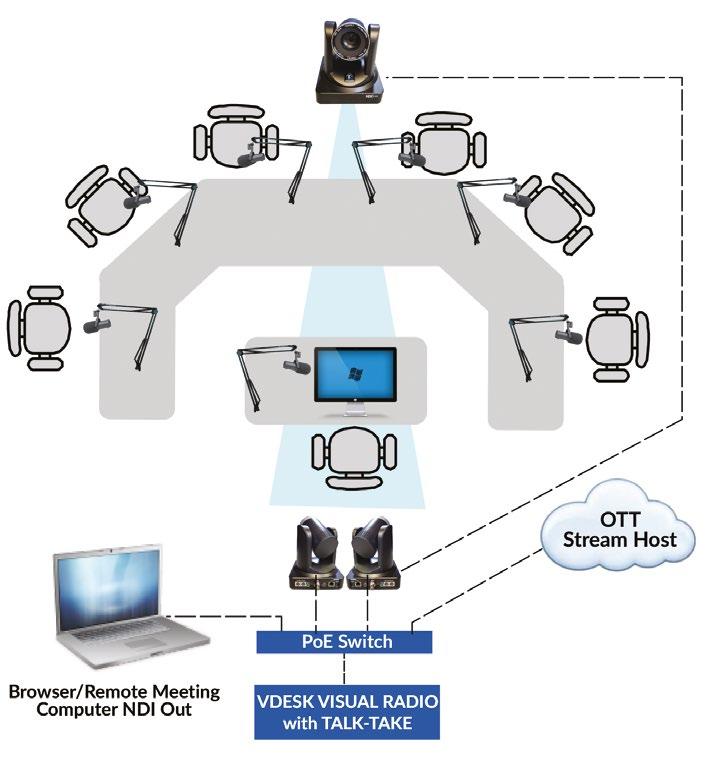
ENCO says visual radio lets a radio station deploy elements such as automatically controlled robotic pan/tilt/zoom cameras, close-up POV cameras, recorded videos, external live video feeds/ webcams, and graphics and on-screen titles including sponsor logos. They can interface with SDI and NDI formats, and during breaks they can cut away to other feeds such as wide shots of control rooms or studios, or run pre-produced videos featuring ad partners.
Info: www.enco.com
NH Radio automates with Visual Radio Assist
Broadcaster serves the Dutch province of North Holland
Visual radio broadcasts offer an excellent opportunity to create additional engaging content, allowing broadcasters to reach their listeners on multiple platforms including social media.

Regional Dutch broadcaster NH Radio is using Visual Radio Assist to automate its visual radio broadcasts.
“NH Radio has been a power user of the product from the start, and has recently upgraded to the latest version, version 4,” the supplier said.

Visual Radio Assist automates visual radio broadcasts. The product auto-switches cameras based on audio levels from presenters. NH Radio uses it to create an entertaining experience for listeners via live stream, morning TV or social media posts.


Beyond camera automation, NH Radio uses the dynamic Output Players to display scheduling and show information on alpha layered overlays and physical decor screens. This feature is possible through VisualRadioAssist broadcast-standardized NDI signals, which provide integration with NH Radio’s existing video infrastructure.
Broadcast Engineer Bart Schutte said the flexibility of the Visual Radio Assist Scheduler enables NH Radio to automate the control of studio decor screens and overlays on stream and TV, even if radio shows change at the last minute.
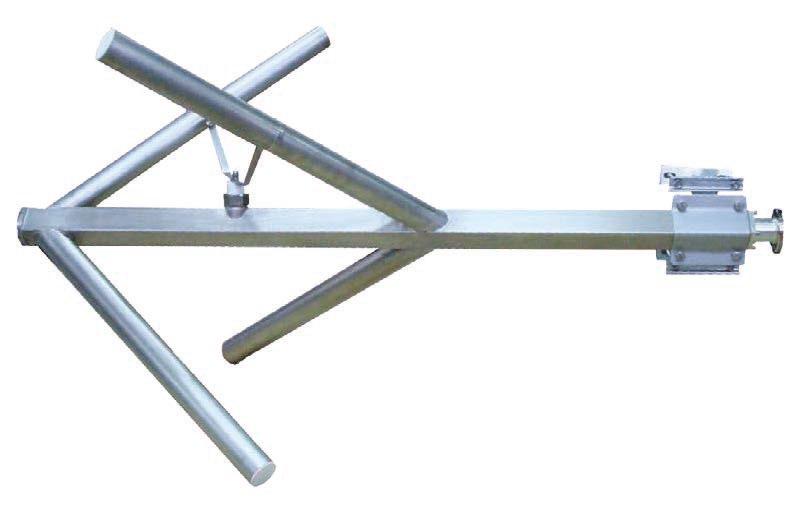
Visual Radio Assist is offered with various monthly pricing tiers including Lite, Pro, Plus and Enterprise. The latter features studio redundancy, unlimited users and players, custom dashboards and a large amount of cloud storage.





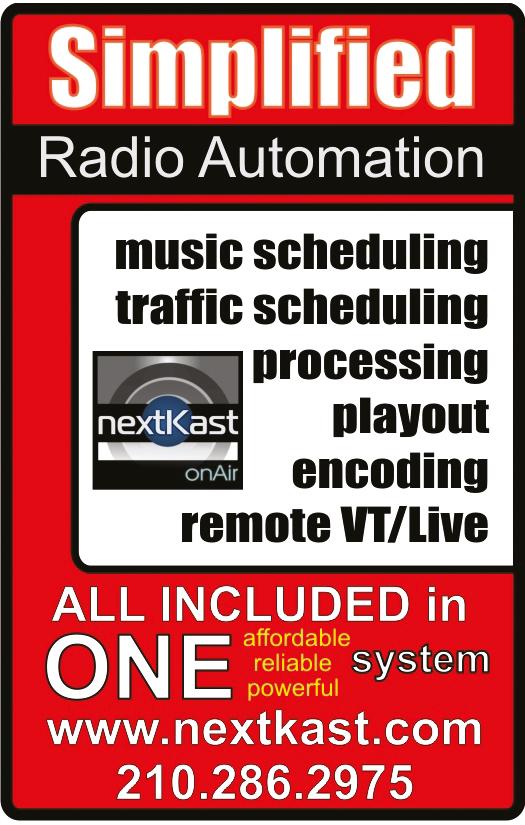
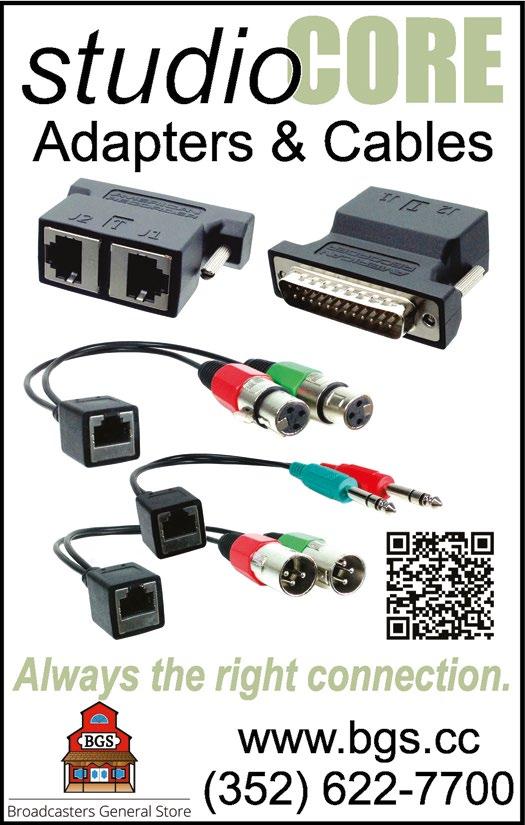
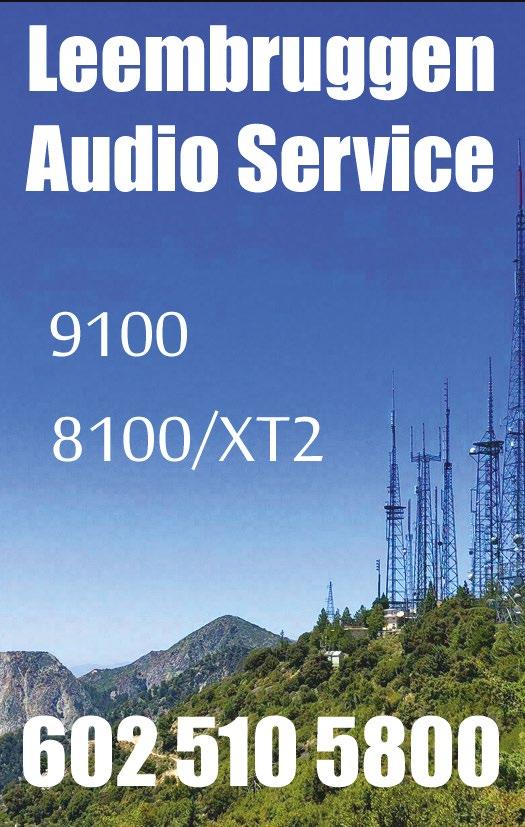

Recipients of the 36th NAB Crystal Radio Awards for community service include KBCO(FM) Denver; KBXX(FM) Houston; KCYY(FM) San Antonio; KKHJ(FM) Pago Pago, American Samoa; KOSI(FM) Denver; KSTP(FM) Minneapolis/St. Paul; WALR(FM) Atlanta; WREW(FM) Cincinnati; WTMJ(AM) Milwaukee; and WUSL(FM) Philadelphia. And Bonneville’s KTAR(FM) in Phoenix received the Crystal Heritage Award.

NAB Show in photos
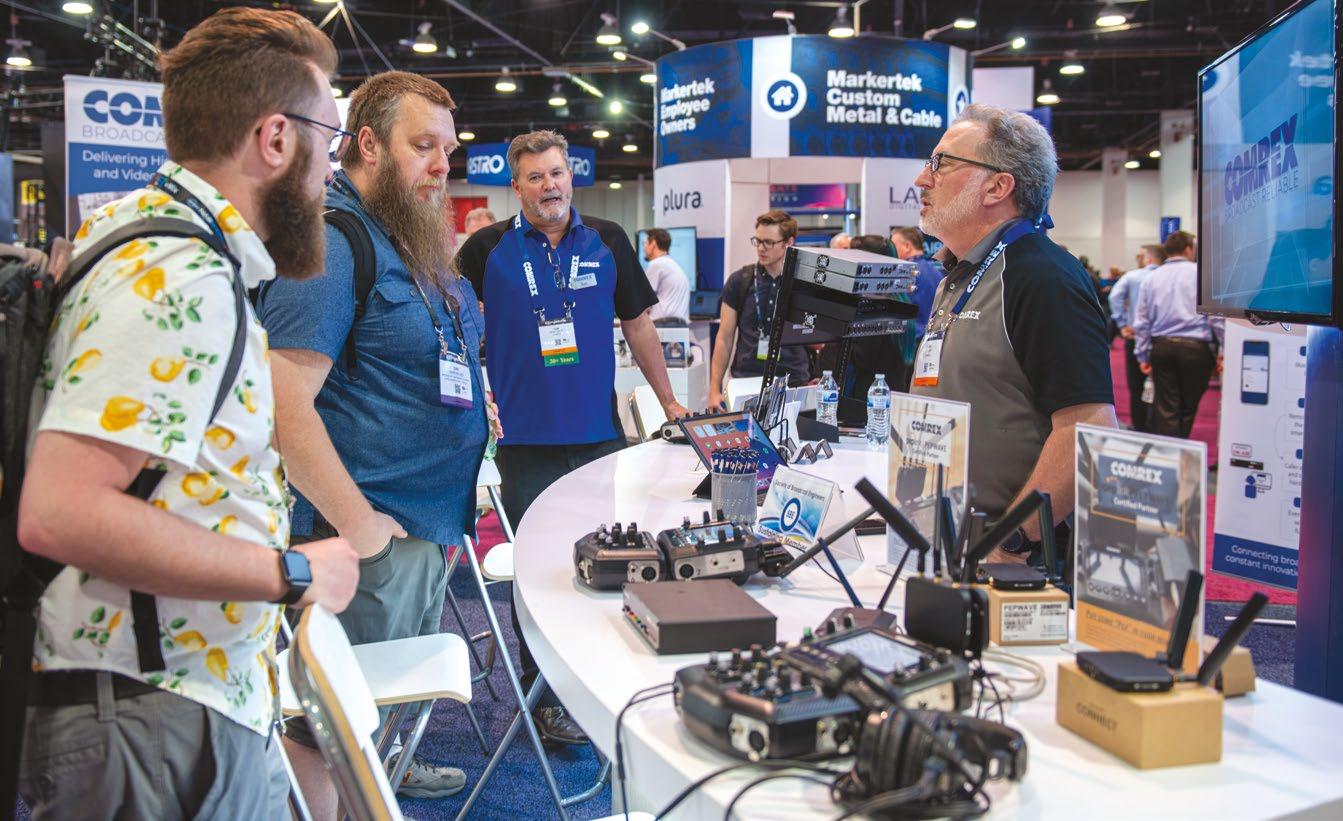
Elenos executives unveil Quick Block transmitters and their highly modular architecture. They’re suitable for FM, HD Radio and DRM+. The company plans versions for digital TV, DAB+ and AM.
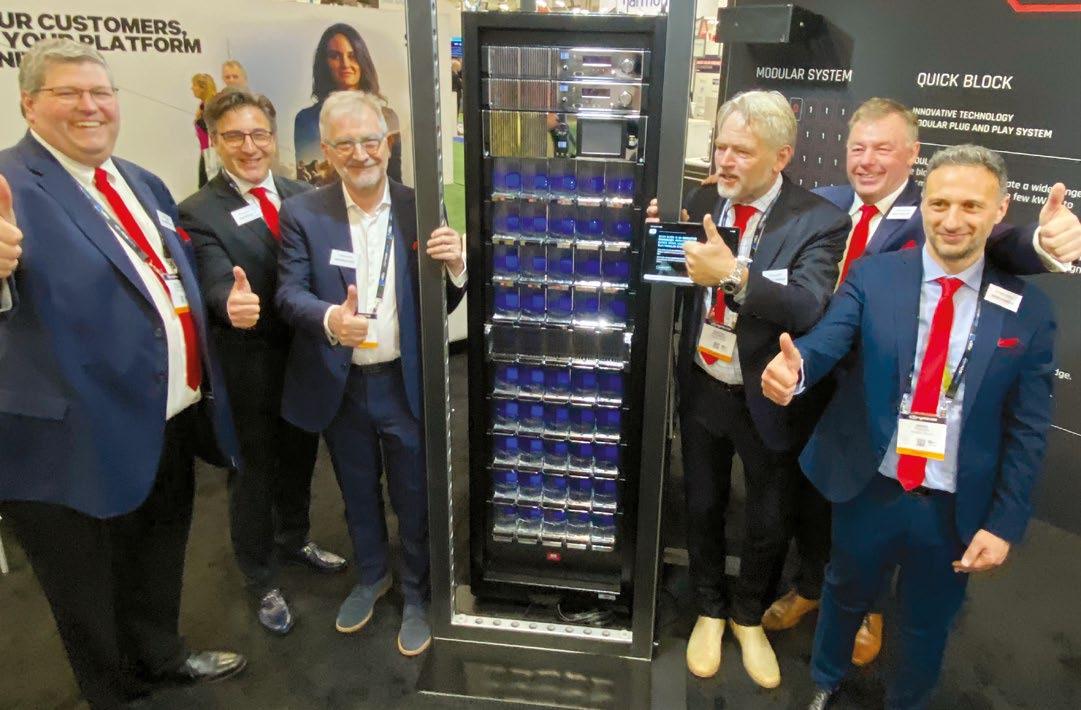
While many radio-relevant companies were in the West Hall, quite a few could be found in Central, including Comrex.
NAB staff members were among the audience for the session “Ask the FCC.”

Wheatstone was asked by Brian Kerkan of ZMinistries if it could build a VoxPro right into an LXE console. The answer was yes. Wheatstone is making that option available to others too.
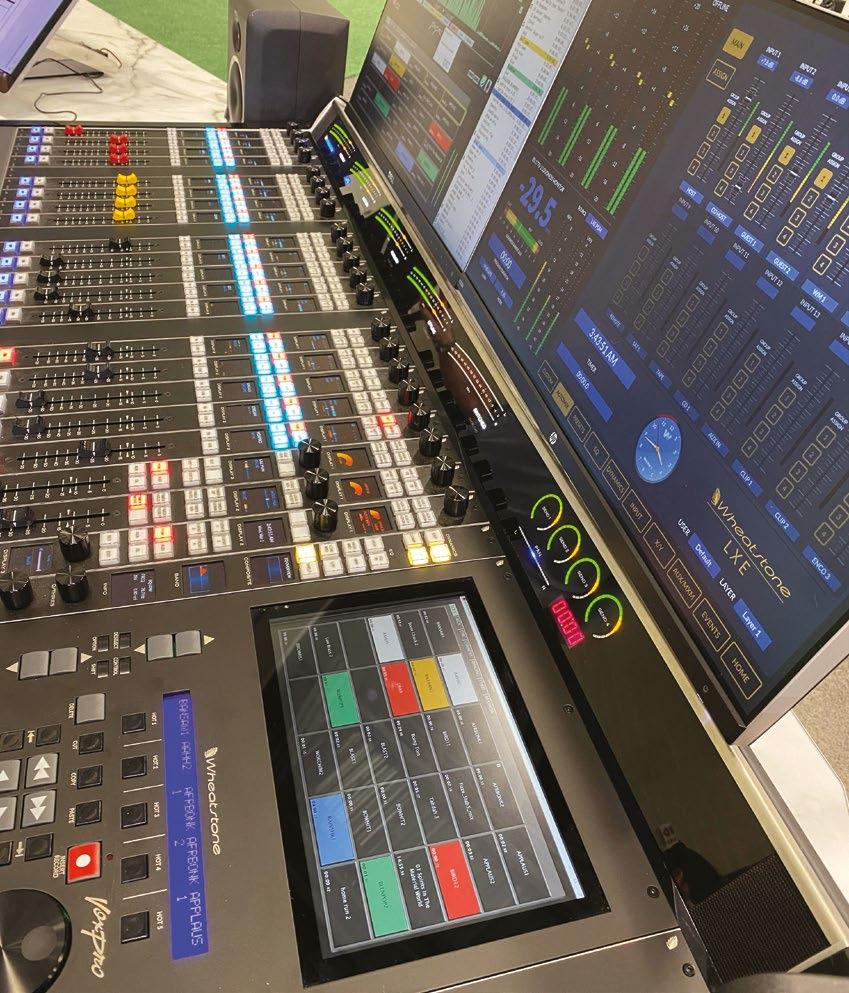
The location is different these days but the Amateur Radio Operators Reception remains a hit. Bill Gould of Moseley was among those hoping to snag one of the great door prizes.
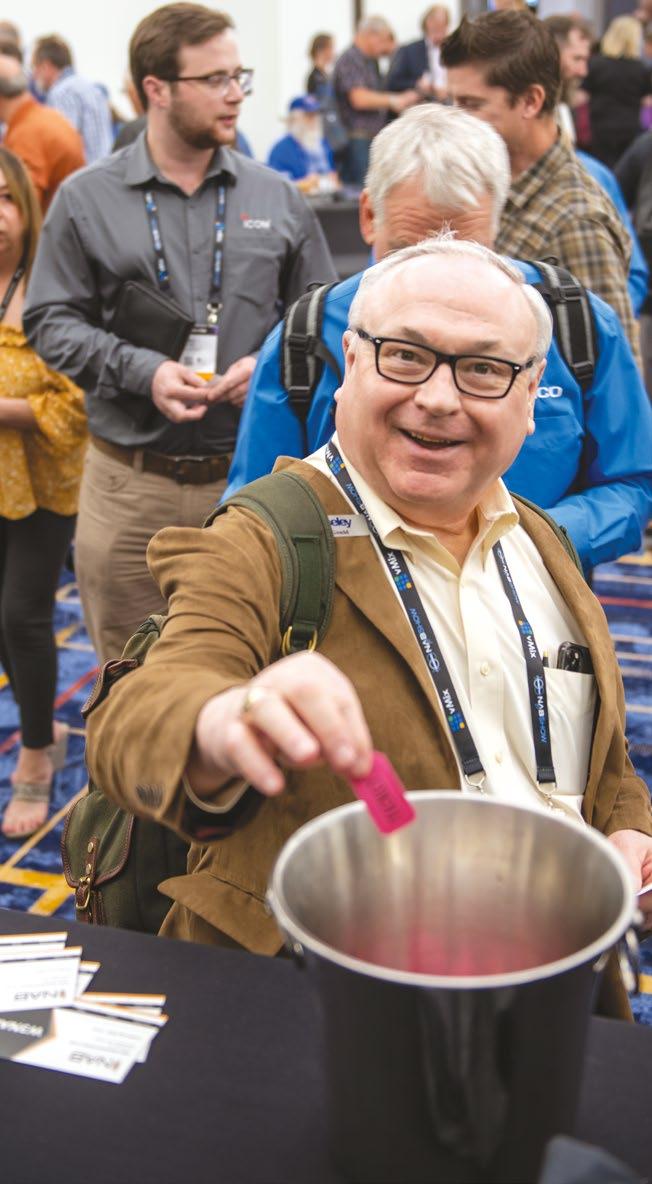 Photo by Paul McLane
Photo by Jim Peck
Photo by Jim Peck
Photo ©NAB
Photo by Jim Peck
Photo by Paul McLane
Photo by Jim Peck
Photo by Jim Peck
Photo ©NAB
Photo by Jim Peck
Mike
Items in the NAB Show Store are always good for a chuckle.


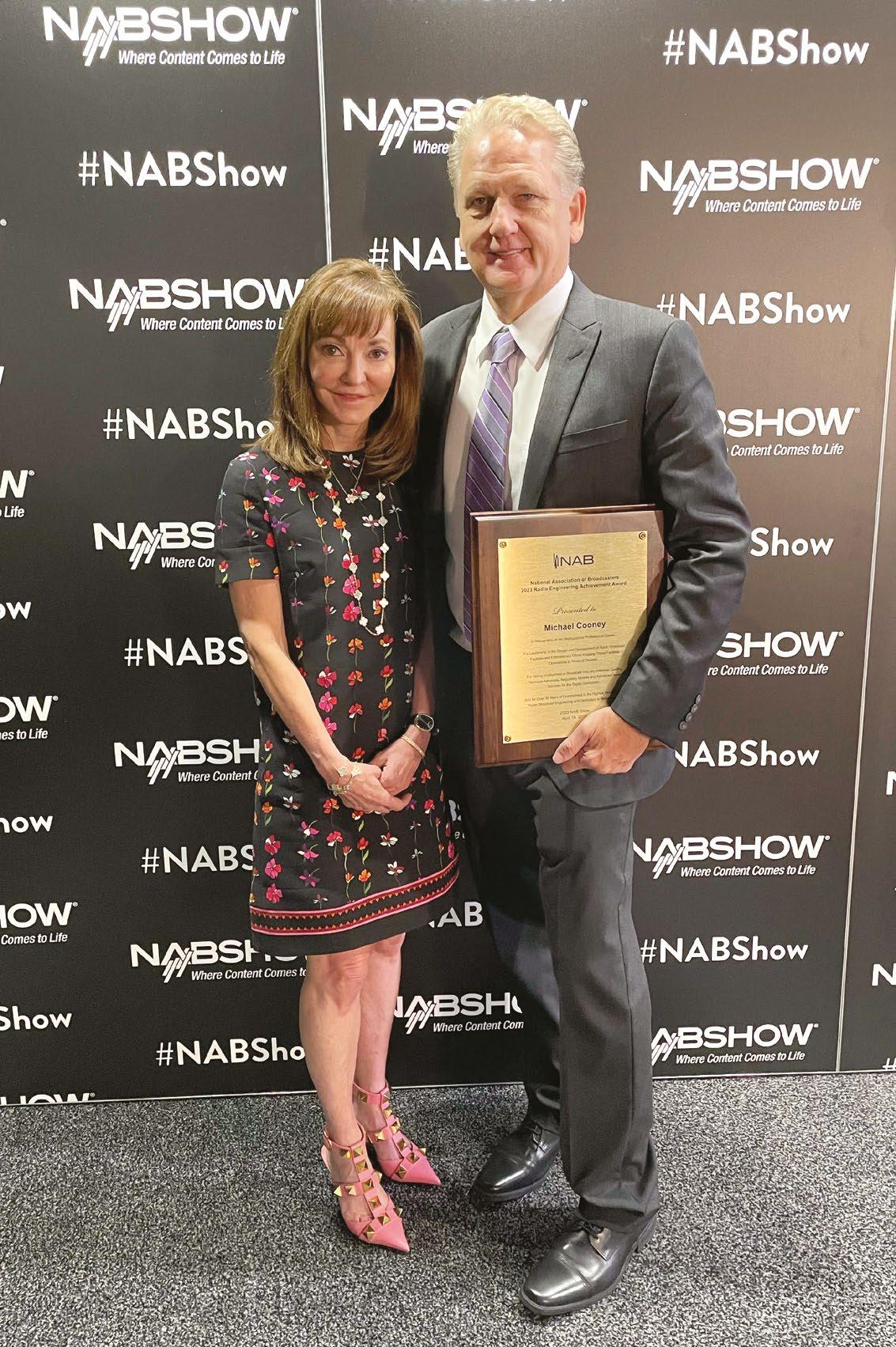
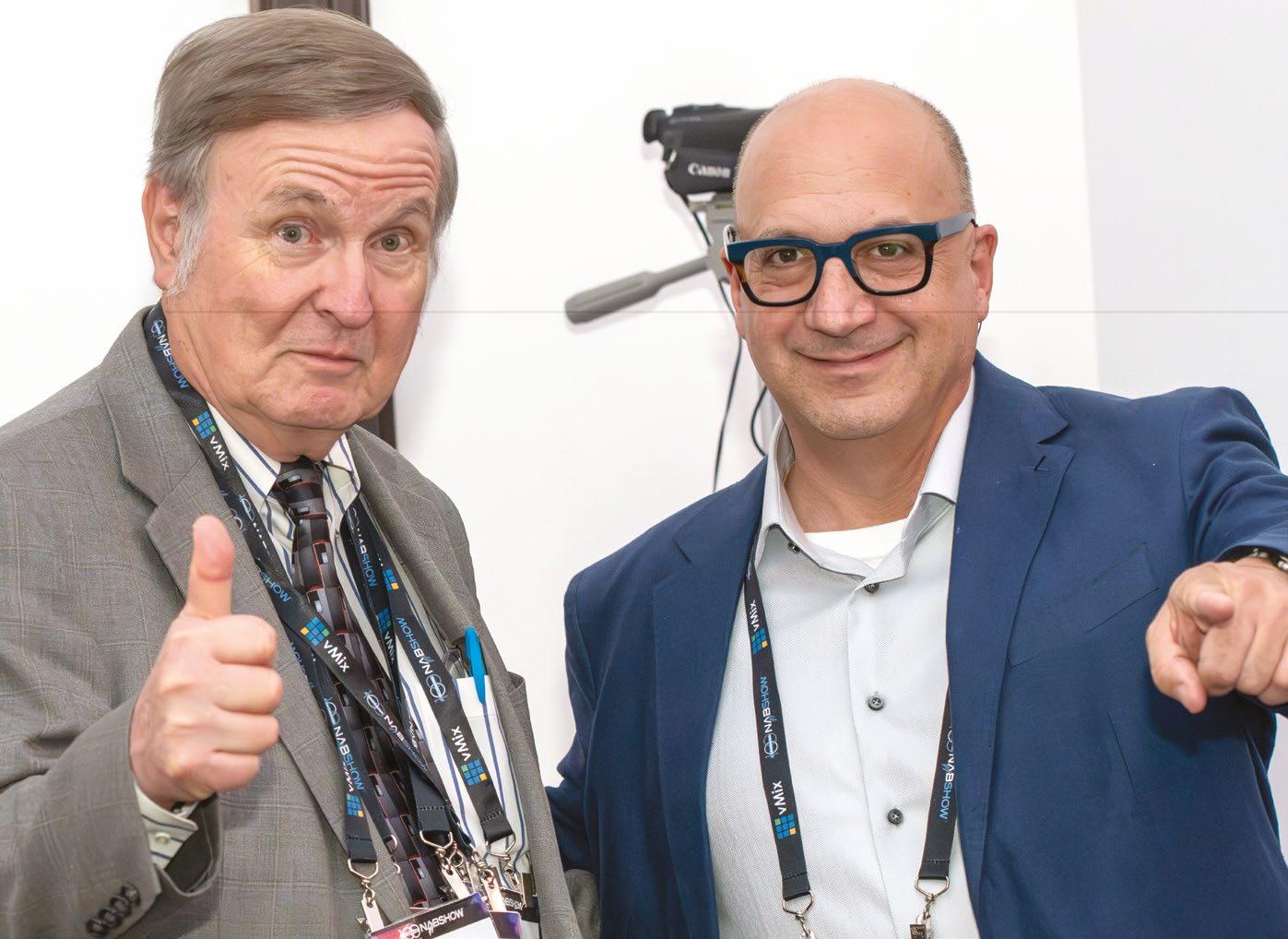

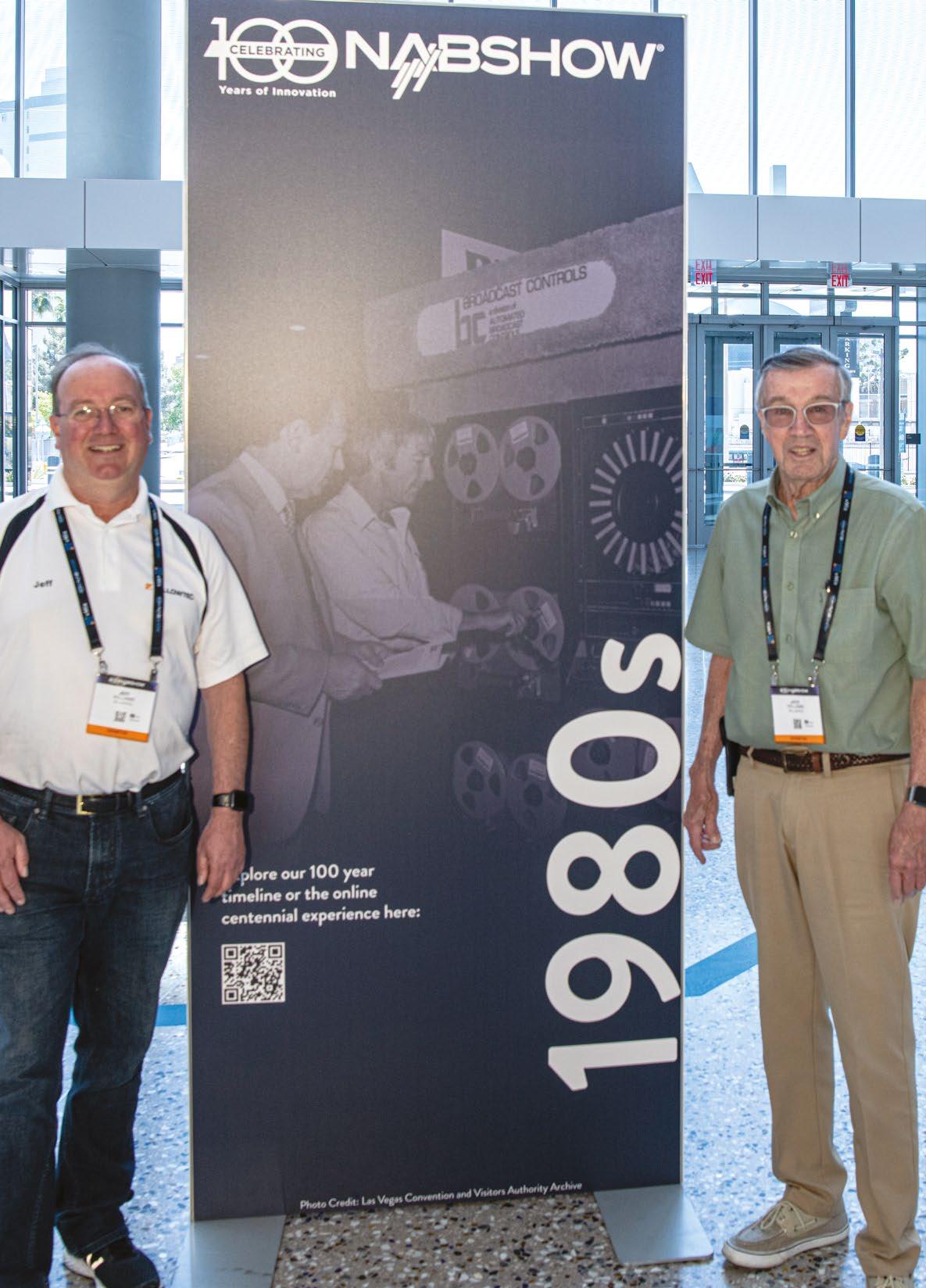 Photo ©NAB
Photo by Jim Peck
Photo by Beasley Media Group
The NAB Best Paper Award was presented at the opening BEITC session to Liam Power, systems engineer at One Media, for “Audio Services Over ATSC 3.0: A Proof of Concept.” NAB’s Lynn Claudy is at right.
Tech dynasty! Jeff Williams of Yellowtec USA enjoys some show time with his dad Jack Williams, the founder of iconic audio manufacturer Pacific Recorders & Engineering.
Photo by Jim Peck
Photo by Jim Peck
Tieline told attendees — including Ray Williams, left, with Glenn Davies and Dawn Shewmaker — about its MPX I and MPX II codecs.
Tom McGinley of Montana Public Radio, Townsquare Media and Radio World hangs with Fred Willard of Univision Communications.
Beasley Media Group CTO
Cooney received the NAB Radio Engineering Achievement Award. He’s shown with his boss, CEO Caroline Beasley.
Photo ©NAB
Photo by Jim Peck
Photo by Beasley Media Group
The NAB Best Paper Award was presented at the opening BEITC session to Liam Power, systems engineer at One Media, for “Audio Services Over ATSC 3.0: A Proof of Concept.” NAB’s Lynn Claudy is at right.
Tech dynasty! Jeff Williams of Yellowtec USA enjoys some show time with his dad Jack Williams, the founder of iconic audio manufacturer Pacific Recorders & Engineering.
Photo by Jim Peck
Photo by Jim Peck
Tieline told attendees — including Ray Williams, left, with Glenn Davies and Dawn Shewmaker — about its MPX I and MPX II codecs.
Tom McGinley of Montana Public Radio, Townsquare Media and Radio World hangs with Fred Willard of Univision Communications.
Beasley Media Group CTO
Cooney received the NAB Radio Engineering Achievement Award. He’s shown with his boss, CEO Caroline Beasley.
